#Golden ring
Explore tagged Tumblr posts
Text

The One Ring as a human. Highly desirable, powerful and dangerous.
#my art#lotr#lotr rings of power#the one ring#lord of the rings#sauron's ring#humanization#the one ring humanaized#golden ring#the rings of power#silmarillion#silm art#the silm fandom#the silmarillion#lotr fanart
1K notes
·
View notes
Text








[I slept all day. I woke with distaste. And I railed. And I raved. That the difference between. The sprout and the bean. It is a golden ring. It is a twisted string.]
#s22e08 to bakersfield and beyond#guy fieri#guyfieri#diners drive-ins and dives#golden ring#twisted string#distaste#difference#sprout#bean
161 notes
·
View notes
Text
Dragon Age Iconic Patterns: The Sun

In this post I will try to extensively gather all the sun-based or sun-like imagery that we find in all the games of Dragon Age. From the most typical ones to those which may seem obscure or with a hidden allegory/design. I will qualify their resemblance with the Sun symbol as Strong, Weak or other.
This post contains the following symbols
Chantry Sunburst
Elvhenan Culture: Sun symbol among the Evanuris
Elvhenan Culture: Asterisk Symbol and Elvhenan Doors
Elvhenan Culture: Golden Ring
Elvhenan Culture: Crappy Sun
Elvhenan Culture: Elgar’nan and Sylaise
Elvhenan Culture: Murals
Tevinter Culture: Green Star
Tevinter Culture: different decorative elements
Dwarven Culture: Fairel and Dwarven art
Ferelden Culture: The Sun Face and the geometrical Sun
Grey Wardens and the Sun
Avvar and the Sun
Flemeth
Qunari, Par Vollen, and the Solium Constellation
DAO design
Free Marches Rural Areas
[This post belongs to the series “Analysis and speculation of Statues”]
[Strong] Chantry Sunburst
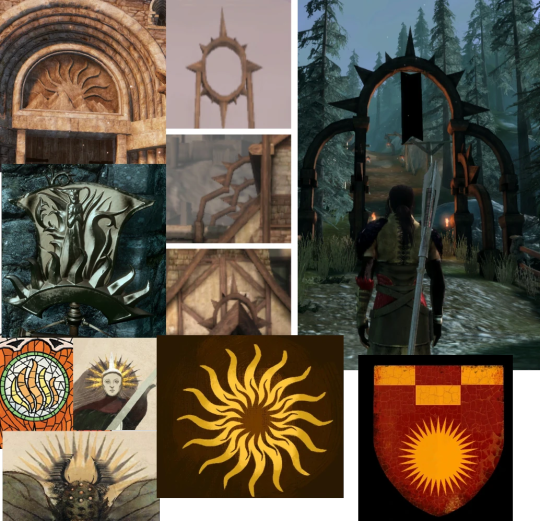
The most typical one that appears in DA series is the Sun or Sunburst with wavy rays, repeated so much along the games that we can identify it immediately. It’s the unequivocally symbol of the Chantry. We found it in many versions, and it represents the “dawn” with the idea of hope and “new beginnings”, but also the fire that “purified” Andraste in her pyre to let her ascend to the Maker’s side. In the posts of Andrastian Art [Andrastian Design: Stained Glasses], we also find that “balls of fire” [which can be interpreted as a Sun in another way] are shown to represent the Maker or the Faith in Him.
Andraste’s single spiked helm seems to be inspired in a single sun ray, at least this is what an illustration in the Chant of Light [book of World Of Thedas] seems to suggest.
In general, most of the representations of the Chantry Sun have 16 rays.
The same sun-like symbol appears in its Tevinter version when we see the Imperial Chantry; the only difference with the Orlesian one is that the Tevinter Sunburst has straight rays.
As a detail, in DAO, we had the typical representation of the wavy sunburst present in some strange devices of Tevinter origin, for example, the ones we found in [Brecilian ruins], while the main Church in Denerim, or in Haven, display spikes that, more than resembling a sun, look like thorns or even a thorny vine. This may be a consequence of an original plan in linking, design-wise, the chantry symbology with the thorny vines that represent the Blight or the Darkspawn [As we explained in the section “Non-mural symbol: Thorny vines” from Murals in DAI: Basics], or merely it was a limitation of the design of the game, as we know DAO suffers from.
We also know that tranquils should display this symbol on their foreheads, burnt with lyrium, but as we saw along DAO, none of them had it. Later we were informed that the devs had problems to add this mark on the npc, therefore, it was never shown until DA2. When it comes to this symbol, it is interesting to see that tranquils carry the metaphor of “a Sun burning their minds and emptying them”, which may or may not be related with Dwarves and their fear to the Sun and potential relatinship of Elgar'nar shoving a fire ball into their underground lands [More details of this concept in Deep Roads [DLC Trespasser]: Lower Walkways in particular with the codex Torn Notebook in the Deep Roads,].
[Strong] Elvhenan Culture: Sun symbol among the Evanuris
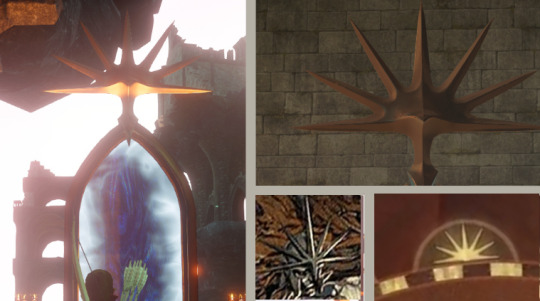
Strangely close to the Chantry Sunburst symbol, we find the “half” sun symbol [tagged along the blog as Sun-head creature] in what we suspect was one of the ancient primordial dragon symbols that some Evanuris took over when they claimed Divinity [for more context, read Attempt to rebuild Ancient Elvhenan History]. It’s hard to say which Evanuris took control of this symbol, but we know there is a clearly sun-like symbol present in the Crossroads of the DLC [as a statue, check The Crossroads [DLC Trespasser]: Entrance] and in the Shattered Library [as an Eluvian, check Shattered Library; Entrance and Courtyard]. With the release of the Vinyl, we also discovered and reinforced the hypothesis that this symbol belongs to or was co-opted by an Evanuris [read Speculations about the Vinyl Art for details] thanks to the image of an elf wearing a hat with that shape.
A consistent detail of this image is that it’s a half-sun with exactly 7 rays.
[Weak] Elvhenan Culture: Asterisk Symbol and Elvhenan Doors
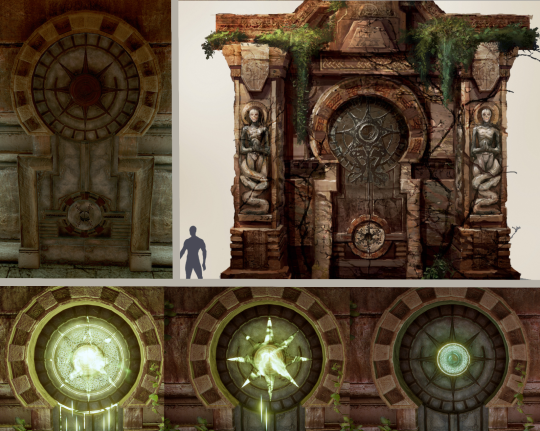
If we extend this imagery, and check other symbols that may look similar to a sun, we find the ancient Elvhenan Doors [Elven Ancient Shard-based door], which top displays a pointy sun of 8 rays that may or may not be related to the Asterisk symbols [also related to the Titan’s core, which I talked about in the post of Murals “The Death of a Titan”]. In the way the door gets illuminated when activated also makes us see a “circle” in it that can be loosely related to the “Golden Ring shape”. More details about this ring will be treated below.
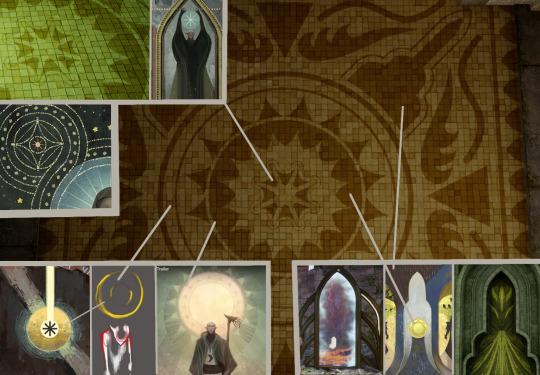
This strange sun on the ancient door also makes us think in the Asterisk Symbol [made of 8 points], which lays at the centre of the yellow mosaic, which may be related to the core of a Titan [asterisk of 8 points too]. The link is immediate when we see that this asterisk is outlined by a shape that looks like a star or a Sun, inside a big ball with triangular-shape ends. This same symbol appears in the last Trailer of DA4, behind Solas, when he is presented like an Hermit, mysterious, apostate mage. Around this “sun” we can make out several concentric lines that may refer to a “Golden Ring”.
The Asterik symbol also appears in murals such as “The Creation of the Veil” or “The Death of a Titan”, which allowed us to relate them with the core of a Titan and its immense power of "making real what you imagine"reinforcing the reality", but this symbol also appears in a corner of Solas’ tarot card.
The yellow mosaic also has some shapes at the four corners that may represent eluvians or something related to Mythal. In the mural of “the Temple of Mythal” from “The actions of the Inquisitor”, we see that Solas draw a particular star of 8 points inside a door frame that resembles this “eluvian outline”, but it’s also the shape of the doors of the Temple of Mythal which represents Mythal herself in her dragon shape. All these symbols seem to reinforce the idea we explored in “The Death of a Titan”: Mythal seems to be related to the core power of a Titan represented by an asterisk that evolves into a golden ring and into a sun.
As I repeated several times in Speculations about the Vinyl Art, at times, we find some hints where stars or balls of fires [also understood as suns] are related to Mythal and Elgar’nan, making us suspect that, maybe, Mythal and Elgar’nan share a nature similar to Falon’Din and Dirthamen’s: apparently, the same creature with two different aspects from them. If this were the case, associating Mythal with the Sun would make sense, and it would also explain why, if Elgar’nan was so central in the Elvhenan culture, there are so few representations and statues of him, while Mythal overwhelms it.
[Weak] Elvhenan Culture: Golden Ring
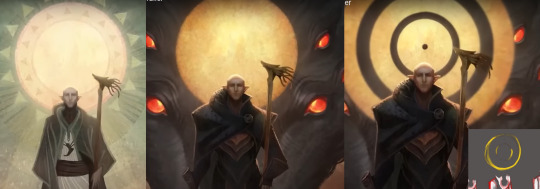
During the last trailer of DA4, we see Solas turns into the Black Dread Wolf as a sun in the background becomes a moon [single golden circle] and later, it separates itself into concentric rings, that may or may not be related to the “Golden Ring” so deeply entangled with Elvhenan culture. Thanks to this imagery, we may relate the Sun to the Golden Ring [specially if we consider that the mural presented in Nation Art: Elvhen displays the yellow ring in a position that may be considered “the sun”, but also the "authority/power above"]
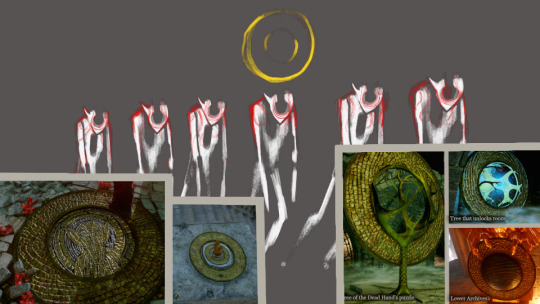

We need to remember that the Golden Ring’s presence is always associated with control, power, and occasionally to Mythal and Dirthamen. In the mural of the “zombie elves”, it’s above all of them, and due to this position, it could be interpreted like a “sun” or moon upon the controlled, zombified elves. But I’m not too convinced in this interpretation, since we already explored in posts such as: Nation Art: Elvhen, Exalted Plains: Ghilan’nain’s Grove and the Dead Hand, DLC: Jaws of Hakkon - Frostback Basin, Elvhen Tomb, Ancient Elven codices; Fen’Harel’s mountain ruins, The Crossroads [DLC Trespasser]: Elven Mountain Ruins; Vine-covered Tower, Murals in DAI: The Death of a Titan, and Speculations about the Vinyl Art that this ring was more related to control, power, or even forced change/shape in some cases. Due to its power or potential knowledge, it's also associated to Dirthamen Owl [which also could be Andruil's owl according some inconsistencies in the same Unreliable Dalish legends].
On the other hand, it’s never clear if this symbol may have morphed into a sun along the ages with the loss of memory that the Elves had throughout generations when they lost their immortality. However, I tend to consider that this Golden Ring may have changed into a Sun when it entered in contact with human groups, in the same way that I see the story of Fen'Harel gave enough context for humans to create the Maker myth based on him, potentially during the time of Halamshiral [for more details, read The Chantry and the Mythology of the Chant of Light]
This ring also appears in the last scene of DAI, when we defeat Corypheus, showing Mythal inside it, as bits of red lyrium sprout around it. This can be related to many speculations done in Speculations about the Vinyl Art, where we can conclude that another fragment/part of Mythal is still trapped in the Black City, corrupted, and contained by an immense power that may have been used before by the rest of the evanuris to control their own people.
The Golden Ring has also been seen enclosing Elven Tree Statues and Elven Orbs, implying its relationship with elvhenan power and/or Mythal’s [after all, we know that Mythal took the power from a Titan from which elvhen orbs were developed, and trees are also her symbol, according her vallaslin]. It's worth noting that the only working orb we saw in the game was Mythal’s, so far.
[Weak] Elvhenan Culture: Crappy Sun
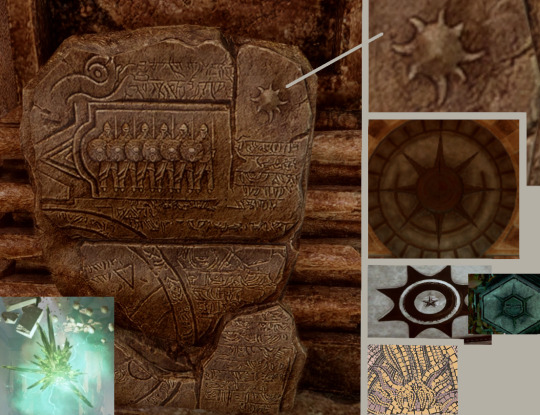
There is also a strange symbol that I called “crappy sun” in the ancient tablet we find at the entrance and deep into the tomb of Forbidden Oasis: Solasan Temple [along this blog I’ve tagged it as “Stone in Razikale-Ceremony-style”]. It’s hard to say if it represents a sun or a breach. It may be related to a sun similar to the one of the Elven Ancient Shard-based door that, later, Tevinter co-opted to turn into the several versions of pointy suns we see in Tevinter Pre-blight ruins, [let’s remember they were not Andrastian yet, and still they had this symbology in their buildings and elements because it may have been related to ancient dragons, or taken from another elvhen symbology during the time of the Dreamers since there are some proofs, such as the Tevinter Mosaic [Invasion], that may show that Tevinter had a better relationship with elves back then].
Maybe the original symbol was related to Elgar’nan, as we see in his mosaic, where he shoves down the sun into the earth, and its rays are wavy and a bit “crappy”. If this relationship is correct, maybe what Elgar'nan shoved into the Earth to destroy the dwarves/Titans was not a sun but a breach? Again, a very unlikely hypothesis.
This “crappy sun” also has 8 rays.
[Strong] Elvhenan Culture: Elgar’nan and Sylaise
Elgar’nan’s mosaic was interpreted in the post Evanuris, and basically shows an elf shoving down a Sun of wavy rays into the Earth. It’s easy for us to relate this image to the unreliable Dalish legend of Elgar’nan [read Elgar'nan: God of Vengeance]. Elgar’nan is presented here as the son of the Sun itself, who tried to burn all life on the Land out of Jealousy, so Elgar’nan vowed vengeance against his Father’s cruelty, and his rage won against the fire of the Sun. Then, “Elgar'nan threw the sun down from the sky and buried him in a deep abyss created by the land's sorrow.”
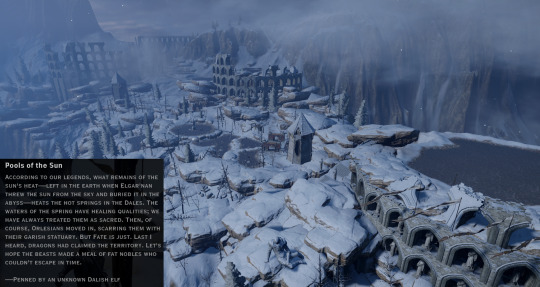
This story can be followed later in the post Emprise du Lion: Pools of the Sun, where we find another unreliable Dalish legend claiming that this place has spring waters because it was here where Elgar’nan shoved the sun into the Earth. I also made a link to Sylaise considering the Elvhenan arenas we can see in this region, the presence of Sylaise’s Shrine, and her thirst for being always competing with someone. These details can make us suspect that this Sun could have been Sylaise [so deeply related to fire, the sun, and also as angry as Elgar’nan according the Song to Sylaise].
It’s very worth noting that these two legends, said by different clans, claim that Elgar’nan pushed the Sun into the Abyss. Another detail we have to assume is that "Abyss", "Beyond the Deep Roads" and "The Void" seem to be one thing related to the places where the Titan sleep [or even inside the Titan themselves] instead of a strange dimensional pocket we never saw before. This links the Elvhenan with the Dwarven in what we speculated in Murals in DAI: The Death of a Titan.
With this relationship, we see again the Sun as a weapon of destruction and control.
[Weak] Elvhenan Culture: Murals

Murals present a red sphere with rays that may imply a Sun .
In the mural “The Creation of the Veil” [1], we find a red sphere inside a black one, making us suspect it’s the big evil released by the Evanuris that Solas isolated with the creation of the Veil. Around it, there are seven “bubbles” with similar “rays” in grey and golden colours that may imply “gates” that would allow us the access to the central “sun” or red sphere.
In the mural “The Death of a Titan” [2] we talked extensively about the asterisk symbol, its representation of a Titan’s heart and all that power associated with it, as well as with Golden Rings. The codex in here speaks of a red sphere that contains fury, and maybe all of this can be related to a sun, or better said, the other way around: a Sun as a sphere of fire, related to fury, and buried below underground to contain its destruction. This also brings us some similarities with the unreliable Dalish legends about Elgar'nan.
In the mural “Red Lyrium Idol” [3] we also commented how the image looks as if Solas were walking on a sphere of fire. It may be related to the red lyrium idol too. Here, we keep linking this idea of a “sphere of fire” as a potential Sun.
In the murals of “The actions of the Inquisitor” [4], we see several times that the red sphere associated with the big evil isolated behind the thick, impenetrable barrier of the Black City seems to be positioned in places that may allow a soft interpretation as a “sun”in the sky.
These symbols seem to gather more importance as we analysed the Vinyl Art, where we find the concept of the Eclipse [as an ominous symbol of Fen’Harel that covers and hides the Sun] and a lot of iconography of stars, which can be interpreted as “suns”.
[Weak] Tevinter Culture: Green Star

Pre-Blight Tevinter art has a “star” symbol that may be interpreted as a sun, specially if we consider that the inside of this green star displays the symbol of the elvhenan Golden Ring in red colour. However, it seems more likely to be a symbol representing the power that one can extract from the Breaches. The green colour helps in this interpretation and puts it a bit farther away from a sun interpretation than other symbols. However, it keeps linking the Golden Ring with the power of creating a Breach.
[Confusing] Tevinter Culture: different decorative elements
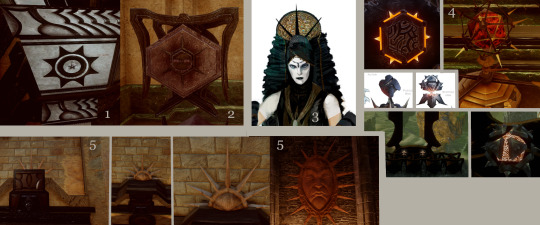
The rest of the symbols in Tevinter objects may have some relationship with the Sun. For example, we find doors, boxes, and columns decorated with an 8-pointed star [1] but we also find another one with 6 points in something that looks like a box [2]. The shape of an “hexagonal” sun of 8-pointy rays can be found as well in objects like the “scrying orb” [4].
Among the outfits, we find a 3-ray comb used by Tevinter women [3], which may be related to the sun-based symbol of an Old God [and potentially related to the corresponding Evanuris associated with it]. This symbol is a lot closer to the "Sun-head creature" we found among Elvhenan objects.
As a curious one, I will always point out the strange, hidden Sun figure that belongs to the Free Marches decoration that can be found at the entrance of the Inner Sanctum in Western Approach: The Still Ruins, Viridis Walk and Inner Sanctum.
I think it’s clear and safe to say that most of the sun-based symbols present in Tevinter culture [and previous to their conversion to Andrastian religion] may have been originated from the contact with the Elvhenan [during the Dreamer time where we can see less repulsion to Elvhen according the Tevinter Mosaics] or [most likely] with the dragons that may have been related to the Elvhenan, as I made the connection in the comic post The Missing.
[Weak] Dwarven Culture: Fairel and Dwarven art
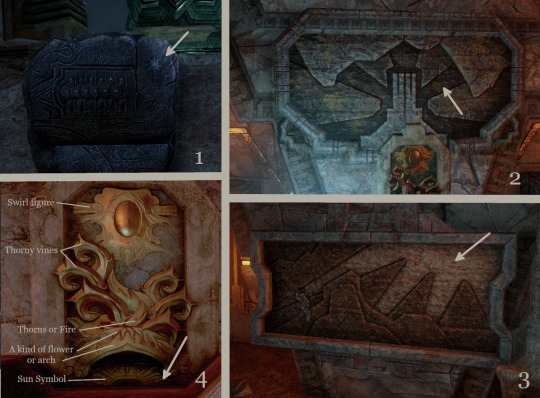
The Dwarves, at least the ones in the Fairel’s ruins, may have some link with the Sun as well. In these ruins we find the same exact stone tablet we find in the Ancient Elvhenan tombs [1], which displays the “crappy sun” I commented above. Once again, it could be a sun but also a breach, so there is no much sense to keep focusing on it.
Another symbol to relate the Sun to the Dwarves may or may not be an old “Dwarven stone-paintings” we saw since DAO, which basically shows a dwarf working the stone [3]. Based on symmetry, we could assume that the triangles on the background are stalagmites, but if we stretch-out this interpretation, they could even be seen as a sun with its rays. It’s very unlikely, since it seems to be more a design resource to highlight the scene of the stone-painting, but for completion’s sake I think it’s worthy to keep it commented here.
However, this simple design allows us to interpret it in different ways: the spikes we see can be pieces of rock protruding from the ground and the Dwarf in it is mining them [as its original codex in DAO seems to imply], but also it could be understood as a quarter of a Sun peeking through the corner of the image as a Dwarf works tirelessly.
Later in DAI we are introduced to another piece of art of similar characteristics [2]. The building was never possible to be identified unequivocally, and in posts like “Architecture of Kirkwall : Gallows and Lowtown/Darktown” I related it to representations of Kirkwall or cities that may be similar to Kirkwall where the runecraft mastery of dwarves was used [and probably, it was a source of pride for these clans, who may have kept the achievement immortalised in a piece of art reproduced among the noble dwarven families]. This piece also shows a background very similar to the one in [3] that may be a representation of stalagmites or a sun, if it’s stretched-out enough.
Another strange symbol in the dwarven furniture is the one presented in some stone-seats: an elaborated metal image that shows thorny vines on or over a sun [4]. This symbol appears in many other parts of the game where there are dwarven rooms, but also in Arbor Wilds :Cradle of Sulevin where we can read the Vir Tanadhal, However, in this case, the symbol is not completely the same one than in the Hissing Wastes: Fairel tomb.
It’s hard to suspect if this is a mere reuse of assets, it has a lore-related meaning, or it’s just a reflection that the Dwarves and the Ancient Elvhen had a relationship quite ancient [as it shows the Elvhen tree and its dwarven, more geometrical style, that I’ve been pointing out since DAO in Orzammar]. We have to remember that the Ancient Elvhenan saw the dwarves as soulless creatures, workers of the “pillars of Earth” and worthless. However, I always claimed it was never clear if this was a reference to ancient Dwarves that were linked to the Titan deeply to the point that they became Sha-Brytol after the break of the link, or were related to more independent dwarves as the ones we see now, who have a sense of Stone, but can’t understand the Titan with the exception of some gifted ones [such as Valta].
Finally, the dwarves have an additional aspect related to the Sun in the very unreliable codex called Torn Notebook in the Deep Roads, Section 2. I wrote about this codex in a more integral way in Deep Roads [DLC Trespasser]: Lower Walkways. But basically an ex-Dalish elf [now a Qun converted] relates Elgar’nan’s fire [which another unreliable Dalish legend, Elgar'nan: God of Vengeance, claims he shoved the Sun into the Earth] to the fear to the Sun that Dwarves experience [Read the section Elgar’nan and Sylaise above]. This may have been a Dev’s choice to makes us aware that there exists a relationship between the Sun and the dwarves, even though there is no lore material that can make it clear enough.
[Strong] Ferelden Culture: The Sun Face and the geometrical Sun

In the Tryptich presented in Andrastian Design: Tapestry and Tryptich, we find three symbols on top of each part of the scene: the six-snakes that represent Tevinter, the golden city above all the image representing the Maker or the Chantry Religion, and over the section of Ferelden/Orlais chantry, a 8-pointed sun which rays look like triangles. Once again, the resemblance of this symbol with the elvhenan sun in the mural “Temple of Mythal” is remarkable [check the Temple of Mythal in “The actions of the Inquisitor”] or the sun shape in the elvhenan yellow mosaic or in the background of Solas in the Trailer of DA:D. This could come from different roots:
1- An Orlesian root, considering how much of the elvhenan influence it had during the time of the Halamshiral and the coexistence of humans and elves in the Dales for some years [to the point where inter-racial families were made, as it was hinted all over the Exalted Plains]. I spoeculated how the idea of the Maker may have been developed during this time in the post The Chantry and the Mythology of the Chant of Light
2- Another potential root is related to the Alamarri root, and therefore, linked to the Avvar: this sun may be a representation of the Lady of the Sky for the same reasons I will explain below in the Section Avvars and the Sun.
We can find similar icon in the book World of Thedas, where they show a unique Ferelden Tryptich [3], which top displays this symbol with a sun that even may have a shape of a Golden Ring within it. In either case, we know that this symbol later was part of the Ferelden Chantry, which sun is very pointy, as DAO showed it [see the first section in this post: Chantry Sunburst].
In DAI, we find in some small towns of Ferelden, a unique strange Sun with a crying face [1]. On it we see a bird and a squirrel. It’s hard to know exactly what this is, [check the post Nation Art: Ferelden], but maybe it can be understood as a representation of Andraste made by Ferelden culture mixed with some local animals and fables created as a mixture of cultures, similar to the tale that related Wyverns to Andraste [check the wyvern section in Dragon Age Iconic Patterns: The single spike].
There is also a fish drawn in the DLC of Hakkon on a fisherman shack [2], which displays a pattern that can be related to the “crappy sun” designs on its skin. Not sure what to make about it. The closest is that the Avvar represented this symbol as a way to reflect what they may have seen in the Isle of the Lady, where a big ancient breach have been there, open, since the time of Telana [read about this in “The Veil and the preservation of the Waking World” from the post Frostback Basin [DLC]: Miscellaneous ].
[Strong] Grey Wardens and the Sun

The typical symbol of the Grey Wardens involves a chalice that represents the Joining ritual. It always displays a Sun, and not any sun: it’s one with a strong resemblance to the Sunburst of the Chantry. Let’s remember that the Grey Wardens was and is an independent Order that doesn’t respond to the Chantry, and even more so: it was created before the existence of the Chantry, and before Andraste was born. So any quick explanation that this sun is present in this object due to some potential influence from the Chantry seem unlikely.
However, as I showed in Western Approach: The Still Ruins, Main Chamber and Hall of Silence, there are griffons with this same chalice that belonged to pre-Blight Tevinter, maybe remotely associated with Dumat in some ways [since they appear in a hall called “Hall of Silence”, and Dumat=Silence]. We know that the Joining, as a ritual of blood magic, came from the knowledge of Arlathan elves and Tevinter Mages during the desperate times of the First Blight when nothing seemed to stop the darkspawn and even slaying Dumat did not work the first time. Therefore, this Sun may have some relationship with the elvhenan, the Old Gods, or just the blood magic that allowed the creation of the Joining.
[Curious] Avvar and the Sun
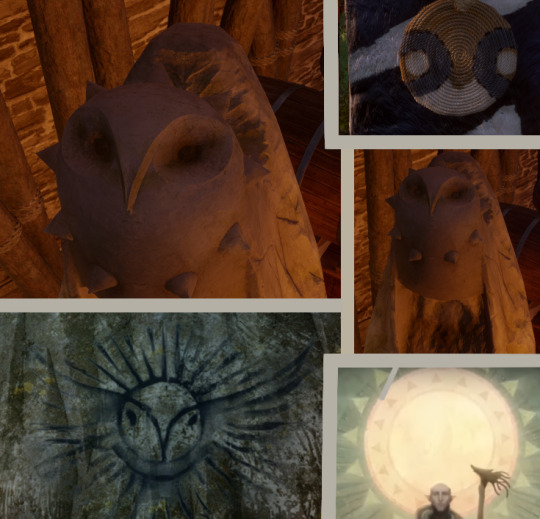
The Avvar have a symbol that I always found very Sun-like due to its design and cultural concept: The Lady of the Sky. It’s not only the concept; the lady of the sky can be any important object in the sky; moons or suns. Since Thedas has two moons, it seems more plausible to think of her as unique as the Sun itself.
In the painting that represents her (found on a wall in the Frostback Mountains) we see a design of an owl which shape looks like a Sun. Even her sculpture in Skyhold displays small spikes around her neck which give her a low-key “sun-like” design, specially if we relate this shape with the “sun” shape we saw in the Ancient Elvhenan Yellow Mosaic or with the star we saw in the “Temple of Mythal” mural [in “The actions of the Inquisitor”] or with the Sun that appears behind Solas in the trailer.
Curiously, her banner displays her eyes in a shape that looks similar to the Golden Ring shape, but in black colour. That the Avvar have an art that may have resemblance with Elvhenan's is not strange for me if we remember that Tyrdda Bright-Axe Path’s story narrates that her lover was an elf that, as it is hinted, may have been the Lady of the Sky herself. This means that the Avvar always were a culture under the influence of the Elvhenan and the Dwarves [due to the marriages they arranged with the children of the Stone].
[Weak] Flemeth
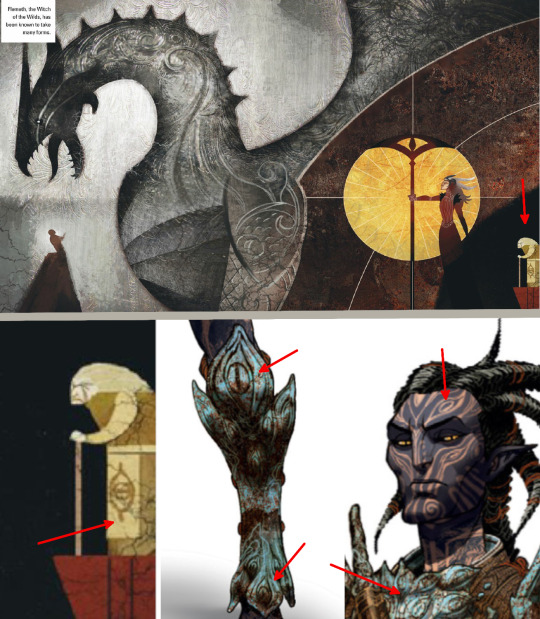
Flemeth also had a unique concept art that shows all of her nature in one drawing: her dragon shape, Mythal, as the central part of it over a human figure that may be a petitioner; a bit aside and as if she were in a inner ring of a brown sphere, The Witch of the Wild: Flemeth, with a very particular staff inside a yellow circle that may be interpreted as a Sun. And very hidden in the corner, in the core of this sphere, now black, we see her as an "old, old woman" with a big eye drawn on her apron, at the edge of a cliff [potentially representing the fragment of Mythal that lives inside her]. This kind of eye is very similar to the ones that we see in the concept art armours of Mythal’s temple guardians. I assume it has to do with her omnipresence due to the manipulation of dreams [we know that she presented herself in dreams to an elf and marked him with the Vallaslin of Mythal after awakening, check the video]
Mythal also has bland hints related to Elgar’nan symbology, which is related to the sun, fire, and balls of fire with anger [check all this in the posts Speculations about the Vinyl Art and “The Death of a Titan”]. Flemeth ends up being related to all this since she carries a fragment of Mythal in her.
[Strong] Qunari, Par Vollen, and the Solium Constellation
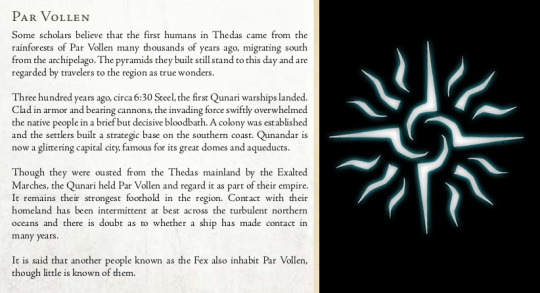
The Qunari have little link with the Sun, but not the land they conquered. In the book World of Thedas we are informed about the existence of the Fex, a race we never saw nor had much information beyond the fact that they exist. May they be related to the Sun or a Sun-base proto religion? We don't know.
In the Codex Constellation: Solium, we learn that this constellation [which looks like a Sun/Star, image above, pretty similar to the Chantry Sunburst I may add] may have been a representation of the Sun or the Moon [or both] for the Neomerian [Ancient Tevinters], however, it could also represent Elgar’nan, since unreliable Dalish legends claim him to be the “eldest of the Sun”.
Another Codex, called The Pyramids of Par Vollen, tells us that the Jungles of this continent have ancient ruins that doesn’t seem to be tombs but places of scientific purposes. The shape of these ruins fits perfectly with the constellation of Solium, making them, in some way or another, related to the Sun. These pyramids are a great mystery in the DA lore, especially for their total lack of information beyond this codex. We know their walls show images of “intricate sea creatures, shipwrights, musicians, archers, and kings. Odd figures are depicted, tall, horned, always in a position of authority and respect.” It seems that there was no resistance when the Qunari came to conquer this place, so we can suspect that this previous civilization embraced the Qun without much resistance, in part, because the Qunari have horns, and that caused respect and authority. Or the civilisation had been gone long ago when they came. Or it was a civilisation that was developed by or under the authority of the Kossith, the ancient Qunari who had no Qun.
The brief description of these ruins also makes me link it, potentially, with the underground ruins we find in The Horror of Hormak .
[Confusing] DAO design
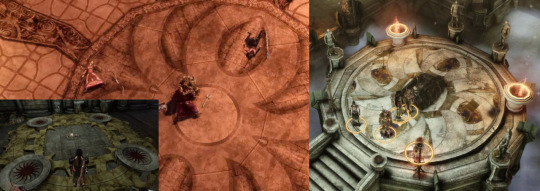
This section tries to relate the Sun shape with designs that may make the connection a bit stretched or not truly reasonable, therefore, DAO leads this part, lol.
We find that many places along the game, specially the ones related to puzzles [Honnleath and Enchanter Wilhelm’s basement] or to Tevinter experiments [Ruins of Brecilian Forest] display a platform on the ground with a symbol similar to the Sunburst of the Chantry. I’m not sure why they are there, specially in the Brecilian Forest, since we know this was a fortress probably developed by Tevinter [ which potentially may have co-opted, as usual, an ancient Elvhenan building and claimed it as its own] just to be taken by Dalish and humans later. This Fortress is a mess in terms of design and statues that it displays, so it’s hard, if not impossible, to truly take it seriously. To me it all feels more like a reuse of graphical resources, but just for the sake of completion, I add the present section.
More of these sun-like platforms can be found in the Tower of the Circle of Magi [which could potentially make sense since the tower was made by Avvar and Dwarves, and it may be a representation of the Lady of the Sky, as we saw in the Avvar section of this post] but also in the Temple of Andraste or in Denerim at the Fort Drakon which makes less sense [unless it is taken as a symbol from the Chantry itself]. Again, these inconsistencies make me suspect the reuse of assets in a game that could not afford to have 5 different platforms designs.
[Confusing] Free Marches Rural Areas
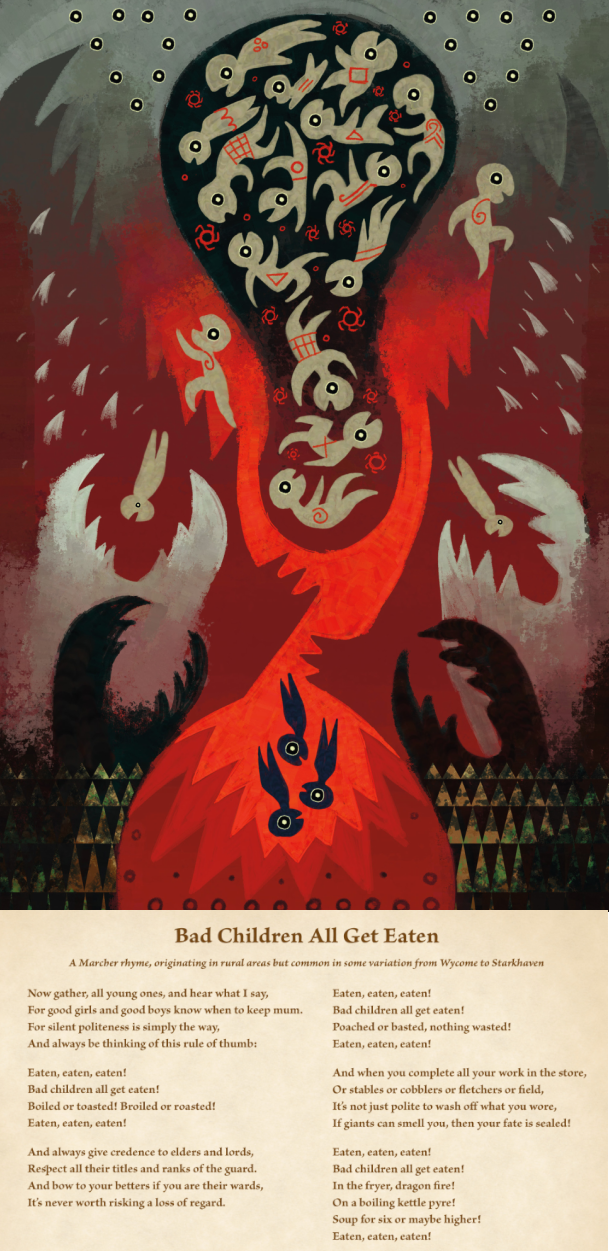
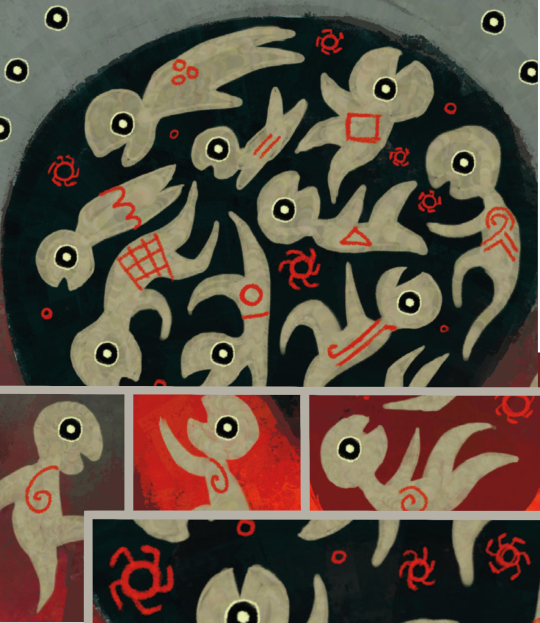
Another place where I found a sun-like symbol was in a very disturbing image of the book World of Thedas associated with a cautionary tale told to Free Marches kids. In it, we see that people/children are punished if they go outside a bubble of darkness with small “sun-like” symbols floating around. Each of these kids have a symbol on their belly or head. Curiously, one of these symbols is a small spiral that I’ve brought the attention upon long ago in the post Hinterlands: Statues, paintings, and structures found in the open where we found the alamarri statue I called Eroded dragon skull which has a “G symbol” on its back, which, at the same time, seems similar to the one present in a reiterative way all over the elvhen artefacts and in some dwarven rug designs.
I don't know how to interpret this image, mostly like the big black bubble that contains these klids seems to protect or shield them from the dangers outside. The kids that "behave badly" are dropped outside of it and are consumed by the dragon fire/jaws of the dangers outside. So in a very stretched way, we can interpret this image that the bubble filled with Suns protects people, or at least, it's the right path to follow not to be eaten by those monsters outside.
Conclusions
To put an end to this post, I would like to bring a short conclusion that we may have reached together along it. The Sun in Thedas is an ancient symbol that mostly every culture took to exploit and use in their own representation of gods/power.
This fact alone is not strange, since in anthropology we can see that severals cultures on Earth have developed religious rites or created Gods out of the Sun itself. The Sun is a symbol related to warmth, light, food, life, and security, so it seems reasonable for DA Lore to take it as the main symbol of Thedas civilisations.
The Sun in current Thedas is immediately associated with the Chantry and Andraste: it is a symbol of hope, of dawn, that provide the idea of new beginnings; it’s also the idea of the Maker itself and the Faith people have in him. It's also the fire that purifies in order to grant ascension [Andraste's case].
When it comes to Elvhenan, the Sun is immediately related to Elgar’nan, who was considered, according to the underaliable Dalish legends, the son of the Sun itself, who in order to save the Land shoved the sun into the ground, potentially causing a great damage to Dwarves and Titans.
There is also a symbol of a half-sun in an Eluvian, a statue, and in a hat worn by an elf, that may suggest that an original god, represented by the sun [potentially an ancient Dragon] was worshipped by the Evanuris. Lately, that symbol may have been co-opted by one of the Evanuris when they took divinity and the identity of the ancient gods they worshiped.
Elvhenan also seem to take the symbol of the asterisk as an oversimplification of the Sun, which across the murals, is also related to the heart of Titans, to power, and to the Golden Ring, which is also associated with control. So, for Elvhenan, we may suggest that the Sun represents immense power, if not, Divinity itself, that may end up being related to the core of Titans. The asterisk is also associated to the orb, a big power object.
Since Elvhenan were the first civilisation we know that started in Thedas [besides the Titans and their children], their symbols of power [asterisk, orb, golden ring] may have evolved along time to reach human groups which developed, later, all the sun symbols that ended up in the Chantry’s.
Thanks to Tevinter, we also can suspect that the Sun may have been a representation of an Old God, since they have a lot of sun-related images in their decoration and objects that belong to ancient times in which they were not Andrastian yet [in fact, so ancient times that Andraste herself was not born yet]. This may mean that the Sun symbol cloud have been taken from the Elvhenan or from the Ancient Dragons. Through Tevinter style, we also realise that the Elvhenan Golden Ring may have been used to create Breaches, which again shows and seems consistent with the idea of relating it to power and control. The symbol of Sun in Tevinter culture may be related originally with Elvhenan or with Ancient Dragons that Tevinter used to worship.
Dwarves have little representation of the sun for obvious reasons, but due to the unreliable legend of Elgar’nan and the war with the Titans, we may establish a relationship in which the dwarves endured the Sun [or the Elvhenan power] at some point in their story.
Thanks to the Grey Warden we can relate a sun with the idea of ancient Blood magic or ancient Dragon blood knowledge, since the Joining is represented by a chalice with a Sun on it.
The Avvar also have a low-key representation of the Sun in their Lady of the Sky, which may be just consequence of their deep relationship with the Elvhenan culture.
Par Vollen may have more answers about the Sun and ancient times, but the lore of DA world is very scarce on this region of the map of Thedas, so we can only speculate.
#Analysis and speculation of Statues#golden ring#alamarri#avvar#Chantry#Dragons#Elvhenan#Flemeth#Grey Warden#High Speculation#Old Gods#Tevinter#Par Vollen#sunburst#Sun-head creature#evanuris#Elven Ancient Shard-based door#yellow mosaic#mythal#flemeth#Elven Owl statue#Stone in Razikale-Ceremony-style#Sylaise#Elgar'nan#Asterisk Symbol#Free Marches Sun#Dwarven stone-paintings#lady of the sky
63 notes
·
View notes
Text

《 An angel cries, keeping the stars alive. 》 a portrait of Crowley.♡
#good omens#anthony j crowley#portrait#art#crowly x aziraphale#ineffable husbands#good omens fanart#crowleyfanart#stars#angel tears#firehair#golden ring#snake eyes#angel x demon
221 notes
·
View notes
Text

THE FALL
#artists on tumblr#art blog#tumblr art#traditional art#fantasy art#fantasy#indie artist#painting#greek mythology#greek myth#fallen angel#icarus#heaven#falling#clouds#sky#cloudy skies#acrylic painting#icarus falls#greek myth art#mythology art#ancient greek mythology#angel art#angelcore#aesthetic#storm#storm clouds#wings#angel wings#golden ring
7 notes
·
View notes
Text

#red gloves#gloves#golden jewelry#jewelry#aesthetic#cigarette#burgundy#red#moments#ring#golden ring#vintage jewelry#vintage fashion#city walk
2 notes
·
View notes
Text

8 notes
·
View notes
Video
Stone carving of the Assumption Cathedral in Vladimir Olympus OM-2n Vivitar Series 1 35-85 f/2.8 Kodak Vision 3 250D
#Olympus OM-2n#Vivitar Series 1 35-85 mm f/2.8#Kodak Vision 3 250D#film 135#analog#manual lens#filmnotdead#filmphotography#ishootfilm#church#Vladimir#Golden Ring#Russia#Плёнка#аналог#мануальный объектив#цветное#Золотое Кольцо#церковь#Православие#Владимир#Россия#flickr
5 notes
·
View notes
Text
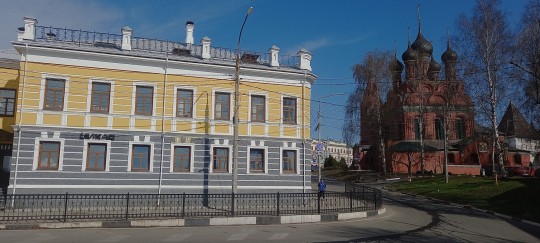





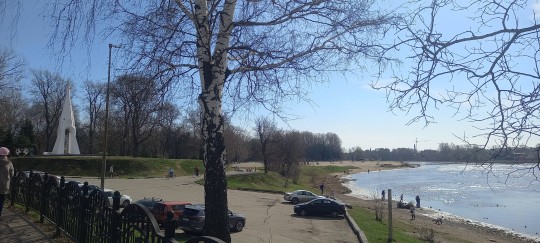
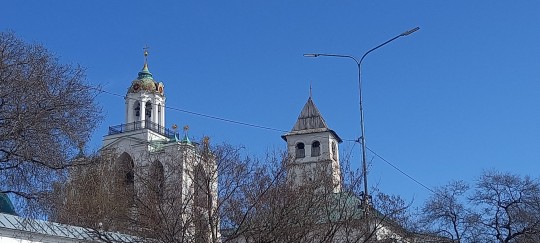


Small part of Yaroslavl p4
3 notes
·
View notes
Text
Farofa with golden onion

#farofa#golden ring#onion#onion ring#food#foodie#brazilian food#brazillian food#comida brasileira#comida
2 notes
·
View notes
Text

Day 6: Golden
I don’t have gold ink so just pretend
#artist#artists on tumblr#traditional artist#artbynio#art#inktober#ink#inktober golden#inktober day six#golden ring#ring
5 notes
·
View notes
Text








[I slept all day. I woke with distaste. And I railed. And I raved. That the difference between. The sprout and the bean. It is a golden ring. It is a twisted string.]
#s07e11 family style#guy fieri#guyfieri#diners drive-ins and dives#golden ring#twisted string#distaste#difference#sprout#bean
53 notes
·
View notes
Text
Speculations about the Vinyl Art

Recently, we had some bits of art that heated up the speculations about the Black City. I write here a detailed set of observations, interpretations and lore speculations.
Most of the images were taken from the source posts of @felassan [here, here, here and here] and andarateia, and I copy-pasted a lot from my draft here. Of course, many of these interpretations are shared with the original authors too since it’s obvious and natural to do these interpretations [specially if one tries to work under the principle of the Occam’s razor]. In others, I may differ, of course.
The vinyls

They are named “Golden City Merge” [blue-teal one] and “Black City Splatter” [Yellowish one].
Golden City Merge
It has a blue-teal colour around a yellow centre that may be golden.
One of these colours coincides with the codex Vir Dirthara: Homecoming, which claims that a “city home” is made of blue glass with spiralling up towers, so only through this detail in colour, and the shape of the city we see in the cover of the vinyl, we can assume that Elvhenan “homes/cities” may have been of this style too. Here, it’s all the lore we can link to these colours.
The only piece of [unreliable] lore we have to blandly link the Golden City with Arlathan is Tyrdda Bright-Axe Path. In it, the man who wanted Trydda’s hand in marriage wanted to lead an army to the North, in order to reach the Golden City. From an Alamarri’s point of view, Arlathan was also in the north, crossing the Boeric Ocean [if we assume, too, that Arlathan was inside the Forest of Arlathan, which is a reasonable speculation given the peculiarities of the place, read The Missing for more details]. This information had been shared to him via dreams by a demon. It is a bland piece of lore because this is a tale that was transmitted through generations, orally, and we know how sensitive to change and modification this process is.
If we keep all these bland speculations, we can play with the idea of assuming that the Golden City may have been Arlathan. If Arlathan was surrounded by Arlathan Forest, the tree theme in the art of the vinyl would add more consistency to this speculation.
Black City Splatter
It has a black splatter over a worn-out, pale yellow colour. It may be considered a “sick” yellow even.
What we speculated from Corypheus’ design is that, due to the way his face was deformed and pieces of metal [or maybe red lyrium] were incrusted in him, it always looked like “something hot exploded” on his left side face [which, coincidental, it was the side which eye was, apparently, blind in his taror card, however, the unmatched eyes is completely inconsistent along art and games]. I talked about this long ago in the end of the post DLC: Legacy and in DA2: Eyes. My point in bringing this desing detail is to say that, when the Magister stepped into the Black City, something “exploded” and melted them, and no matter the Andrastian Myth, we can see it clearly in the design of Corypheus and The Architect. That this vinyl has this colour design and name reinforces the idea that the Magisters unbalanced something when they entered, and it exploded, catching them in the explosion.
The Architect also has a design in his face that tells us that he was melted, and some things were incrusted in his body [I was always curious how a “dragon horn” seems to protrude from his neck]
Although they are focused on the Andrastian Myth, the Tevinter Mosaics seem to reinforce the idea that, when the Magister entered the Black City, they were burnt as well [again, the Myth claims it was the Maker, I suspect the truth is different, but the repetition of melting design in the only two Sidereal Magisters we saw can’t be overlooked].
As a speculation we can assume that the Black City was containing and working properly in the way that Solas had left it when he sealed the Evanuris, until the Sidereal Magisters entered and caused a “burning explosion”. It’s not clear if they caused it with their entering to the City, or touched something that caused it.

the middle of the vinyls show the map of Fade we had in DAO
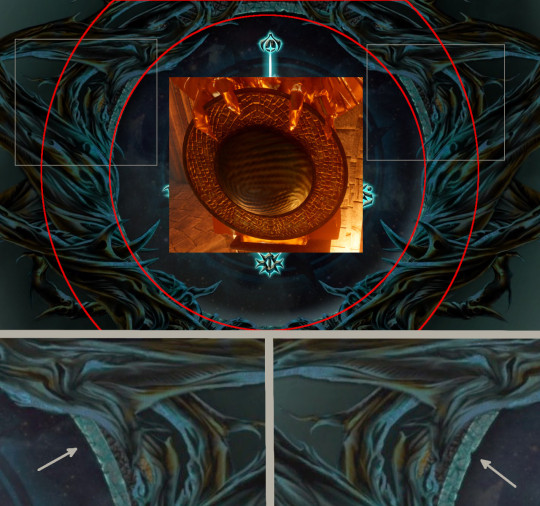
Curious thing, an extraction of this map from the DAO game files, shows that it was surrounded by thorny vines, or something that inspires the idea of thorny vines. And it covers a ring made out of mosaics, very similar to the style of the Golden Ring.

It is also interesting that each of the apexis in the vinyl shows a circle that, according to what my eye can distinguish in that small image, may represent another Golden Ring. These golden rings have been appearing all over the game, specially in DAI.
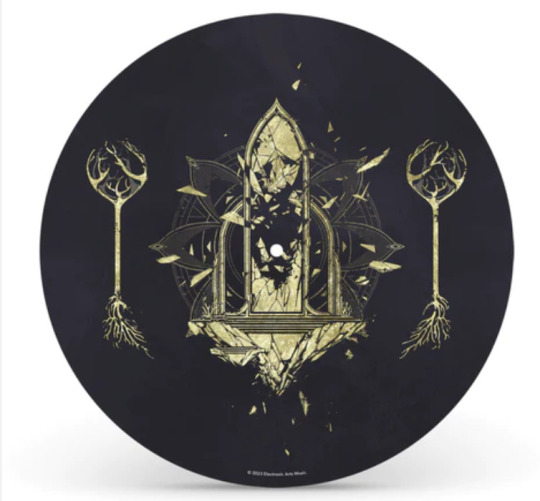
The back of the vinyl shows an eluvian floating on an isle, and two Elven Tree Statue. There is a series of detail we can notice here:
The eluvian is shattered. This gives us the idea that the system protecting the Black City, according to what we have concluded along the posts Murals in DAI: Basics and “The Creation of the Veil”, was broken and whatever kept inside is now free.
Behind it, we see the shape of 6 more eluvians, in a pattern that looks like a flower. The flower may be a mere aesthetic for the vinyl, or could be a representation of the Elvhenan [since the elvhenan banner has a lot of flowers in it, check Elven Ruins to see it], or it may be related to the last bloom of a flower related to the codex “A Flowering Imago” [explanation attempted in the post Ancient Elven codices; Vir Dirthara]
The Chant of Light, if it’s to be trusted with some grains of elvhenan knowledge that was leaked into its text, claims that the Black City has seven gates that, one shattered, will allow the pass of Darkness [Read exaltations in Chant of Light - Part 2]. Darkness has always been associated with the Blight, so I think this piece of info may have been part of elvhenan knowledge that made it into the religious text in ways I explained in “The Chantry and the Mythology of the Chant of Light“. If the Eluvians are gates to the Black City, the seven ones are represented in this vinyl illustration.
The Elven Tree Statues have been seen in many opportunities along the DAI game, and its symbolism is not clear. In the Shattered Library it appears as a source of Fade power, crackling with green energy until the Inquisitor approaches and absorbs it. In the Elven Mountain Ruins, appears as central along the corridor of the Forgotten Sanctuary, and as the main symbol of the Smoking Tower. In Ancient Elven codices; Fen’Harel’s mountain ruins I made a deep analysis of potential relationships of this tree with a source of power to create “in-between” spaces, as well as related to lyrium, the power of the Titans, a Titan’s heart, or Fade itself. It also appears as central in the puzzle of the Dead Hand, where energy is gathered in it, while being surrounded by Golden Rings.

What seems to have in common in all these analysis is that these trees are related to power, and potentially a power to create worlds that may be associated with Titans. Maybe they represent the power that Mythal found when she killed the Titan, according the mural “The Death of a Titan”, and this was the reason why the Evanuris killed her in order to acquire this power. What’s curious is that in this illustration of the vinyl, we see, for the first time, their roots. Which are quite similar to the design of the Mythal’s Vallaslin.
What is this eluvian representing for the Golden/Black City?
The shape of the eluvian is not something to read too much in my opinion. We find these frames in many elvhenan buildings, with other gods too. Even with Andruil in the Shattered Library; Inverted Ward. I think that we have to read it simply as “Elvhenan style for frames” which is deeply related to the shape of door and window frames too, which also carries similar function in the Eluvians: they are “doors” or “windows” to other places in between. I think it’s the typical elvhenan style for frames in general [details in Patterns and Styles: Elvhenan]. There are tons of these tri-style eluvians without flanked beasts spread all over the Elven Ruins. The Crossroads or The Crossroad [Base Game] also show a lot of these eluvians, sometimes flanked by statues, sometimes don’t. A quintuple-style shape is also the shape of the big gates into the Temple of Mythal [check Temple of Mythal, What pride had Wrought: Part 1]. The idea of this shape is that it’s an eluvian with smaller and broader eluvians at the side, overlapped behind, so the final outline looks like it.
The Eluvians are related to the Elvhenan, but also to the Titans in a design point of view: they glow in a similar way as lyrium does or have a similar colour to it. In DAO, we lost Tamlen because an Eluvian was infected by the Blight [and we can justify DAO eluvian as corrupted ones since all of them were non-working or blighted]. So far we know, objects can’t be infected by the Blight, only living things, hence the idea that Eluvian are made of “something alive”. It’s not clear how alive it has to be, since we also know a creepy set of objects that exude “life” in a weird way: The Taken Shape set.
The Eluvians we found in DAO were “Tevinter Eluvians”. It’s not clear if the Tevinter took elvhenan eluvians and modified them to make them work like “communication devices” [as Finn and Dorian explain], or they developed the technology itself. That would also explain why these Eluvians are mostly purple instead of blue [and decorated with human statues that tend to be associated with Tevinter, details in Merril’s Eluvian]. Unaltered elvhenan eluvians have been shown to glow in silvery blue [all of them present in DAI].
Red Lyrium is the product of lyrium being infected with Blight because lyrium is “alive”. So far, this info is what Bianca told us, who at the same time, was told from an unknown source, according to what she speaks about with the Tranquil Researcher in the Emprise du Lion [last part of the post Emprise du Lion: Suledin keep ]. Since we know that Lyrium is Titan’s blood, it makes sense for it to be able to be infected with Blight because Titans are living yet vegetative creatures. On the other hand, there is enough hints to suspect Titans are immune to the Blight, so the lore seems a bit inconsistent on that. More details about this in posts such as Songs and elements that sing and whisper in DA Lore and “The Death of a Titan”.
We also know that the Elvhenan exploited Titan’s bodies in unknown ways, according to all the info we can obtain in the mural from Trespasser: “The Death of a Titan”. Maybe they created Eluvians after they discovered the powers of Titan’s blood. This is a mere speculation about why the eluvian look like made out of lyrium.
Eluvians, then, allowed Elvhenan to do something that, so far, we were told since DAO that magic could not do, according to The Cardinal Rules of Magic: “No one has found any means of travelling—either over great distances or small ones—beyond putting one foot in front of the other.“
There is also a potential interpretation that some Eluvian, somehow, are Gates to the Black City, implied in the mural “The Creation of the Veil”. This information may have survived the ages while being altered into what the Chant of Light claims in Exaltations [Chant of Light - Part 2] as “the Black City has seven Gates”, which is the same amount of “weird bubbles” we see in the mural. It was never clear what’s the reason for having 7 gates to a city you want to seal completely. I have no speculation why Solas could not sealed them completely, and, as it seems, put dragons in them to keep them closed instead.
Eluvians have been used in different ways, as portals to access tombs where elves were slumbering or in Uthenera, but also as “doors to cells”. We have two examples of this: Merril’s eluvian, which, according to Marethari, was a means to keep its Pride demon trapped [details in Merril and the Eluvian ] or as the door to a place inside a pocket dimension called “The ancient Jail” that seems to be a place where slaves or maybe dwarves were taken prisoner by Elvhenan [details in The Crossroads [DLC Trespasser]: Ancient Jail] which entrance has an unmistakable statue of Mythal in Dragon Shape. and inside of it, there are many broken eluvians.

The shattering Eluvian surrounded by two Elven Tree Statue is a similar image to the loadscreen related to Merril that I analysed in the post Merril’s Eluvian, which shows a symbol on the background that I’ve related to Flemeth/Mythal and potentially to Andraste too. Since Merril’s eluvian is related to a prison, maybe in the vinyls we are talking about the same: The Golden/Black city had become a prison for the Evanuris. We know this because Solas himself told us in Elven Ruins that he had banished them.
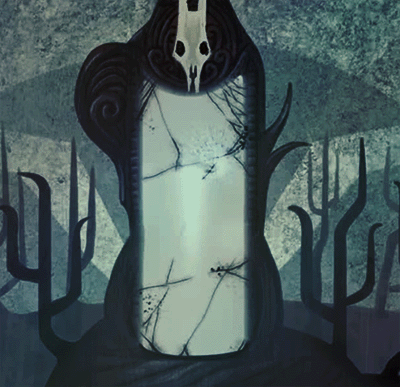
Therefore, a shattered eluvian seems to represent the destruction of a prison, in the same fashion it represented the escape of the Pride Demon in Merril’s quest [see that in the loadscreen gif above]
What the vinyl is telling me with the Shattered Eluvian and seven of them forming a flower, is that we are going to see the release of the Evanuris from their magical prison.
What have to do those trees in the illustration? It could represent the forest of Arlathan where Solas sealed the Evanuris in the city deep inside it. Another option is, that somehow, this prison is sustained/supported by Mythal, or was motivated by Mythal [probably with her death], since these trees seem to represent power, Titans, and Mythal at the same time. Trees are also related to the vhenadahl, which seem to hide a darker meaning that has nothing to do with what the Dalish or city elves believe about [more details in the section vhenadahl in the post “Red Lyrium Idol”].
Mythal as a motivator: If we take Solas’ words in the Elven Ruins, he sealed the Evanuris because they killed Mythal, but we also know in the Dev’s note from the mural “The Death of a Titan” that he really wanted to hide everything they were doing to no tempt anyone else to use this power.
Mythal as the last Guardian: We also know, according to Flemeth’s words in DA2, that Myhtal can exists in different places, as long as there is a “small piece” of her somewhere.
Flemeth in DA2 says:
“I’m a fly in the ointment. I am a whisper in the shadows. I am also and old, old woman. More than that you need not know”
“Must I be in only one place? Bodies are such limiting things. I am but a fragment cast adrift from the whole. A bit of flotsam to cling to in the storm”.
In DAI she says
“Once I was but a woman, crying out in the lonely darkness for justice. And she came to me, a wisp of an ancient being, and she granted me all I wanted and more. I have carried Mythal throuh the ages ever since, seeking the justice denied to her. [...] But what was Mythal? A legend given name and called a god, or something more? Truth is not the end, but a beginning.”
“I nudge history, when it’s requiered. Other times, a shove is needed.” [chuckles]
[Mythal came to me] “for a reckoning that will shake the very heavens.”
Morrigan: And you follow her whims? Do you even know what she truly is? Flemeth: You seek to preserve the powers that were, but to what end? It is because I taught you, girl, because things happened that were never meant to happen. She was betrayed as I was betrayed - as the world was betrayed! Mythal clawed and crawled her way through the ages to me, and I will see her avenged! Alas, so long as the music plays, we dance.
When elven inquisitor asks her
Inquisitor: Why haven’t you [Mythal] helped us? We’ve called to you, prayed to you. Flemeth: What was could not be changed. Inquisitor: What about now? You know so much.... Flemeth: You know not what you ask, child.
Flemeth, about Kieran:
“He carried a piece of what once was, snatched from the jaws of darkness.”
So I think this also may show that Mythal’s retribution is coming. Flemeth has been doing a lot of mastermind work along the ages to give Mythal her deserving revenge associated with the destruction of the Evanuris that, it seems, Solas will perform [since he absorbed Mythal’s powers]. These words were always present in any path you pick, so they are key. Flemeth says that she will stay in this path as long as the “music plays”. This seems to refer to the music of the Darkspwan and the Archdemons that, thanks to Avernus, we know it’s linked, at the end, to something calling from the Black City too [read Songs and elements that sing and whisper in DA Lore and the last part of DLC: Soldier’s Peak]. What I understand is that Flemeth will not be in peace until the Evanuris are destroyed completelly. Which seems to have been Solas’ goal since forever, but lacked power to do it in that moment and he only managed to seal them and borrow some time [and power, since the orb was gathering Fade energy for a millenia]. This plan, of course, was ruined by Corypheus.
In short, considering Flemeth’s words about how shape is limiting, I wonder if there is a chance for Mythal to be in some shape or form, linked to the Golden City, in her Dragon Form, sealing the Evanuris. This hypothesis seems unlikely because Solas told us that Mythal died in some way. You can’t die and be a guardian at the same time.
However, here comes the last hypothesis I can muster: Mythal as the thing that was sealed in the Golden City, fused with the Evanuris. I think there is little to mistrust about the fact that the Evanuris indeed are trapped in the Black City, however, this illustration may imply that Mythal, in her dragon shape, is sealed there too. Considering Flemeth’s words, that sugest she is just a small fragment from the whole, cast adrift, and that can exist in different places at the same time, I wonder if Mythal, in a corrupted, draconic shape, belongs to the creatures that were sealed in the Black City. Maybe she is the ultimate danger, fused with the other evanuris, corrupted and mad by the Blight that “killed” her [when the Evanuris are hard to kill, according to Solas’ words in Somewhere[DLC Trespasser]: Elven Ruins]. This is a bit weird concept, to be fair, but I think that it tastes to “Bioware plot twist”.
The cover and the back
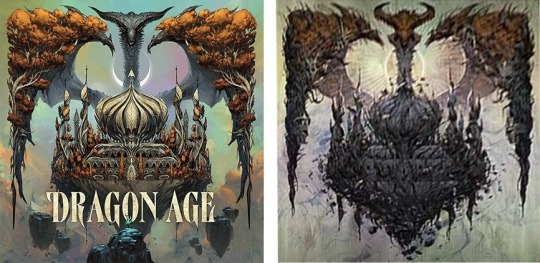
Let’s analyse the illustrations while constrasting these three hypothesis. They show two different versions of the same illustration, a non-corrupted and a corrupted one.
The front cover [details can be seen in this webpage ]: We see, in general, the Golden City with a Dragon behind, extending its wings onto the city, as if they were protecting it. I will call this image the “non-corrupted” version. Now, let’s go to the details.

Facts that can be seen in a better quality image:
The dragon is black or dark coloured with a blue accent. It has slightly curved horns and red glowing eyes [image 1]. From their wings, a dense golden-like canopy raises. In some parts of the drawing it looks like a golden vine spread all over the dragon’s wings [image 2]. Despite being in front of the source of light, the dragon does not cast shadows onto the city. The illustration seems to inspire the idea of “guardian” or “protection”.
The lower parts of the Dragon’s wings show branches that have no leaves, but look like single insect wings pending from branches [image 2, arrows]. Could this be related to the codex “Flowering Imago” from Ancient Elven codices; Vir Dirthara? I don’t know.
The area of the wings without branches shows a texture of red veins which can be perceived as veins of an animal as well as veins of a leaf [image 5].
Behind the dragon there is an Eclipse almost happening.
The cupule of the building shows small typical details of Elvhenan design that I talked and pointed out in the post Patterns and Styles: Elvhenan. The windows look the same design that the elvhenan ones [image 3].
The four spires that can be seen in the city are repeated upside-down, in shadows, implying this place may be similar to the Inverted Ward [image 4, arrows].
The gates of the building resemble strongly the gate of the Temple of Mythal, displaying a draconic image, similar to the statue of the dragon shape of Mythal [image 7].
The trees that rise and entangle with the building seem to be one with the structure, giving it more stability. This gives me the idea that the Dragon, related to these trees through its wings, keeps giving protection and stability to the city.
The whole city lays on a small floating isle.
In front of the isle, there is a tiny humanoid figure with a staff that displays the shape of one of the symbols of the Archdemons [image 6]. I talked a lot about this symbol in the post “The Destruction of the Veil“, linking it to Darkspawn and The Architect.
Around this figure, several birds or winged insects fly around [image 6, arrow].
The space around the city is bright and colourful, reinforcing the idea of a vivid city.
The back cover [details can be seen in this bigger image]. We see, in general, the Black City with a Dragon behind, extending their wings onto the corrupted city, as several faces with symbolic helms are fused in its wings. I’ll call this version the “corrupted” one.


Facts that can be seen:
The dragon is black or dark coloured with red accents. It has curved horns, and a second pair of horns protrudes from its jaw. It’s not clear for me if it has yellow glowing eyes or red ones [image 8]. These horns seem to have a resemblance with the Dragon version of Flemeth in DA2, but not in DAO [ but we know DAO engine was always poor for environmental telling and design details]. Flemeth’s hairstyle doesn’t resemble to any of these horns [image 8]. However, the strange tiara that Flemeth wears seems to coincide a lot with the horn structure of her Dragon shape in DA2 [the tiara has some curves on her temple that resembles the smaller horns in her dragon shape - blue and orange arrow-]. There is, of course, the meaningful yet mysterious central spike too. This spike, which relates Mythal with Andraste and other figures in DA lore, is not present in the corrupted dragon’s head. Considering how important this main spike is for lore, I believe that thinking in this dragon as Mythal may be a mistake [but then again, this is a corrupted dragon that may have suffered a transformation due to the Blight].
From its wings, a dense withered-like canopy dies. The corruption is deeper and more blackened the closer to the extreme of its wings. This corruption looks like black vines, but lacks of thorns. We know that thorny vines are related to the Blight since DAO games. We spoke about this in posts such as Murals in DAI: Basics.
Fused with the corruption of its wings, we see six heads, many of them with clear elven ears. All of them are wearing a helm with the symbols that we identified with the Old Gods / Archdemons in the post of the mural of “Red Lyrium Idol” and “The Creation of the Veil” [image 9].
The area of the wings without branches shows a texture of white veins, and in some parts of this darkened area, bits of orange that seem to imply something is burning inside this corrupted body. Looks like small peeks of Red Lyrium [image 11] or lava.
Behind the dragon there is an Eclipse happening, so the shadows projected by the dragon fall all onto the city. The Design of this Eclipse looks the same like the design of the (alternative) logo of Bioware for Dragon Age Dreadwolf [image 10].
The building is completely overtaken by these black vines, which destroy the infrastructure. It even destroys part of the isle where the city was built upon. We can see that these vines spread deep into it. The corrupted trees are not sustaining and reinforcing the structure of the building but attacking it. The Dragon “lost” its protective nature.
All these black vines remind me a lot of the strange Tentacles we find in the Fade of DAO [image 12]. They protrude from structures or the ground, and some of them even from statues. Maybe it was a concept related to the Old Gods when their design was more related to a Cthulhu creature with tentacles for feet. Check DAO screenshots in the posts The Fade - DAO and The Fade: The Undying Blackmarsh – DA Awakening
There is no tiny humanoid figure in front of the city anymore. However, the symbol that this figure had in their staff is the symbol we don’t see among the faces fused in the dragon’s wings [Image “?”]. This would mean that one of these creatures “escaped” this fate.
The colour of the space around the city is darkened, desaturated, and with “smoke” vein in the air, reinforcing the idea that this space has been corrupted deeply.
Speculations
The Dragon
The dragon and the dense vine rising along its wings, making it look like trees in the non-corrupted version suggests several potential representations:
1) This strong presence of the Forest theme in the dragon may relate this city to Arlathan, which was located in a deep, dense Forest entangled with the Fade, according to the comic The Missing. This would help us link Arlathan and the Golden City as the same place, since it has been very obscure in DA lore the whereabouts of the city of Arlathan. The only hints we have are the Tyrdda Bright-Axe Path, in which the man who wants to force Trydda in a marriage with him claims that whispers told him to conquer the Golden City at the North of their lands, which is a location where the Forest of Arlathan, and potentially the gone city, fit. The unreliable Dalish tales also claim that Alathan was sunk into the underground by Tevinter [details in Arlathan codices from Ancient Elven codices; Din'an Hanin– Elgar’nan Bastion]. There is no more pieces of lore or hints that explain the whereabouts of Arlathan.
2) The dragon seems to be a symbol that may represent Mythal. Another speculation is that this Dragon was Mythal, and the Golden City [maybe Arlathan], may have been her city or the city where her fate was sealed.
According to the unreliable codex [The Temple of Mythal], it seems to be an archeological fact that the Elvhenan used to have a main Temple surrounded by a city developed around it. We know the Temple of Mythal lays in the Arbor Wilds, and we can see some ruins that may fit the idea of a “city/town” before reaching the central part of it [see Temple of Myhtal - Part 1], so the hypothesis that the Golden City was Mythal’s main city seems discarded. However, we also know that Mythal may have had many cities and the biggest ones among the Evanuris thanks to the codex "Song to Sylaise” from Ancient Elven codices, Temple of Mythal.This city can be one of the many that belonged to Myhtal as well as the place where her fate was sealed.
3) This dragon may represent one of the ancient gods that the Elvhenan worshipped before becoming gods themselves. This city also may have been the temple of an ancient dragon that the Evanuris worshipped in the begining [according my interpretation of the Elvhenan lore, explained here], but it is hard to speculate further. There is no much lore but some visual hints on this matter.
4) If it is the city where Mythal’s fate was sealed, we can imagine that the Evanuris, desiring Mythal’s natural Dragon shape, may have invited her here and may have made experiments with her [as we know some Ghilan’nair’s experiments were performed in Tevinter Nights: The Horror of Hormak, that may include some fusion of animals in order to modify their shape]. Let’s remember that the Evanuris were related to winged shapes, “a shape reserved for the Divine and their Chosen” [from the codex Ancient Elven Writing]. If this is the case, the corrupted version of this dragon may represent Mythal, corrupted, and also, displaying her recknoning upon the city, where the other Evanuris were sealed by Solas. She and the others are fused in the corruption itself released by this hypothetical experiment.
There is also a chance that Mythal, in her dragon shape, is still protecting the city, trying to contain the spread of the Blight thanks to the natural Blight-resistance that Dragons have. This concept is only inspired by Flemeth’s words about hinting the fact that she can be in many places at the same time, and bodies are limiting things [there is also a strange hint in the old quest of the Blackmarsh, where a demon in human shape could be in the Fade while a dragon-like shape related to it could be in the Waking World, details in The Blackmarsh and the High Dragon]. Maybe some pieces of Mythal were spread in the world to preserve a bit of her, while her [corrupted] Dragon form remained sealed with the evanuris or maybe she is a guardian of the corupted city. Flemeth also claims to an elven inquisitor that Mythal “changed”, and according to the corruption version of this illustation, Mythal may have changed, and acquired a more menacing looking, as her horns changed too and lost her central spike, such an iconic element in her design.
The inner side of its wings are consumed by the Blight, but the top external side is still resisting. So, the dragon resists the Blight, protecting or isolating the city even though the dragon’s horns changed, and it is “a different/corrupted” dragon. To me this double image represents what the mural “The Creation of the Veil” implies: the Black city, for an unknown reason, has 7 gates that could not be closed and were protected by creatures that could resist this corruption as long as possible: 7 dragons. This idea is a bit supported by the fact that Flemeth always tried to protect Urthemiel’s soul by teaching to Morrigan to protect “what was once” and telling her to have the baby. Urthemiel cannot be an Evanuris that killed Mythal [remember that Mythal wants revenge for that betrayal]. And Urthemiel is a dragon, as we saw him in his Archdemon form, and Mythal/Flemeth is also a dragon, so maybe she is part of the group of these dragons that were powerful “ancient gods”, potentially worshipped by the Elvhenan in the beginning until they got their own divinity. From that moment on, these dragons became the Forgotten Ones, chased by Andruil to the Abyss, and later, worshipped by the Tevinter as “Old Gods” that reside underground. I explained a bit this idea in the post Attempt to rebuild Ancient Elvhenan History.
5) This dragon maybe is not Mythal, but another archdemon, or maybe the mysterious 8th Old God. I never know what to do with that bit of information: the codices of the astrarium imply the presence of an 8th old god dragon that makes no sense to introduce in the lore so late [Constellation: Draconis]. Is this dragon related to this illustration? I don’t know.
As a detail, the wing veins in the non-corrupted version are red, and I am not sure we should understand them as veins of red lyrium. Because, first, it makes no sense to have red lyrium inside a dragon's body in a version which is not the corrupted one, and second, if it were the case, it would imply that Dragons, [these ancient dragons] used to have lyrium instead of blood, which would relate dragons to Titans as the same creatures. And despite the fact that the lore seems to show some similarities between these creatures when it comes to their powers of manipulating Reality or being underground, sleeping, it seems extremely odd. It’s too big of a concept inside the lore of Dragon Age to take it lightly, because it would imply that dwarves are “dragon children”, and things will get more confused when thinking in the “crafted race” of the Qunari.
The two versions of the dragon indeed look like different ones. I’ve been speculating long ago that, so far we can gather from comics and codices, the Elvhenan, in particular the Evanuris, were looking for means to obtain Divinity. The Dragons seem to be extremely old, and ruled the skies when “everything sang the same song” [Yavana’s words]. We can also suspect that the Great Dragons had somniari powers, meaning that they could change reality through the alteration of the Fade [The Silent Grove, Those Who Speak, Until We Sleep] and mortals could attain some degree of this power via their blood. On the other hand, we find in the last comic [The Missing] a mural of potential Evanuris wearing dragon-like outfits. This fits with the old codices of the Elvhenan we found in game, where “divinity was related to the shape of something with wings” that we can assume it’s a dragon. We have several hints pointing to us that maybe, the Evanuris, when they were generals and mages, worshipped “ancient gods” that were Great Dragons, until they found a way to manipulate their own shape to become dragons themselves. Maybe here the Titans appeared as the means for this transformation [in The Horror of Hormak we see that this process of fusing shapes include crystals that seems to be made out of lyrium, maybe these are the Titan’s heart?]
We know that Evanuris did something terrible with Titan’s power that forced Solas to hide all that monstrosity, collapsing the Deep Roads in order to avoid anyone attempting to reach that power again. The codex associated with this event may transpire hints that can be related to a terrible thing being unleashed that may have killed Mythal [or maybe corrupted her? Details in “The Death of a Titan”]. That could be the Blight, or the red lyrium, or something worse that originated these two diseases.
We also suspect that the Forgotten Ones and the Evanuris had been at war for a long time before the Titan War, so how did the Forgotten Ones fit in the reconstruction of this past? It’s hard to say with precision, but some bland and weak hints may imply that the Dragons that have been leading Blights are, in fact, the Forgotten Ones [the only weak proof we have about this connection is through Hakkon/Geldauran in Elvhen Tomb]. This means that the Forgotten Ones may have been dragons [or more likely Great Dragons] and not elvhenan, and, when the Evanuris released the evilness that they created [probably The Blight], it was the Forgotten Ones [naturally resistant to the Blight, read Josephine’s result in Learn More about Dragons] who became the protectors and the means to isolate that disease from the rest of the world until finding a solution.
The Eclipse
Eclipses are associated with Fen’Harel and the events to come, according the codex The Emergent Compendium: an ancient magical tome that produces images and text on its own [DA2]. One of the pictures it manifested was described as "Two shadowed spheres among stars", and it was accompanied by a subtitle that could be deciphered into the phrase "An eclipse as Fen'Harel stirred." [I talked a while ago about how "stir” seems to be used mostly to describe the movement of Titans in DA lore, so the word choice is quite peculiar here, details in “The Destruction of the Veil“].
Eclipses are also related to the dynamics of sun-moon hidding each other or projecting shadows over the other, which may relate Mythal [unreliably related to the moon, according the Dalish Tales/codex Mythal: the Great Protector] and Elgar’nan, who has several unreliable Dalish tales in which he “hides” or “shoves” the sun down into the earth. The concept that the Sun is hidden somehow is repeated in small details along the lore of these gods, even though all of these tales are extremelly unreliable in my opinion. It’s hard to appraise the grain of truth they must have.
If the Sun is related to Elgar’nan, and if the moon may be, somehow, related to Mythal, then, a [solar] eclipse is the moon [Mythal] overtaking the figure of Sun [Elgar’nan?]. The fact that Elgar’nan is associated with vengeance, while Mythal to justice but also revenge, seems to weakly push us in this direction when we remember that Mythal took the place of Elgar’nan as judge of the People.
Let’s open a parenthesis here and refresh details before we continue further:
Mythal has always been a goddess of the Revenge as well, according to Solas in the scene of Altar of Mythal, which places Elgar’nan in a curious and questionable role. Elgar’nan was always related to fury, vengeance, and brutality. And we also know through the codex of The Judgment of Mythal, that she took the place of Elgar’nan as a judge of The People to avoid his fury which destroyed everything it touched. Considering this, it seems that Mythal has been shifting into a more “Elgar’nan”-like shape.
I can’t say Elgar'nan and Mythal are both the same entity, since the old codices of the Elvhenan present in the Temple of Mythal show two different Evanuris. However, the many aspects where Elgar’nan and Mythal overlap, the lack of much more iconography for Elgar’nan as the big “father” of the Elvhenan pantheon [which makes us suspect he was a really powerful Evanuris, probably compared to Mythal], and the repetitive concept of split personalities that some Evanuris seemed to have, make me play with the idea that Mythal and Elgar’nan are the same. After all, Mythral has different representations on statues: as a dragon, as a humanoid, and as an elf in mosaics [check Evanuris]. This is not a peculiarity of hers alone; Fen’harel also has 2 shapes: the elf and the wolf. And we also have the very vague case of Dirthamen and Falon’Din who seem to have different shapes but sometimes one takes over the other and it’s very unclear what’s the true nature of their situation: a lot of this has been speculated in Humanoid Dirthamen and in The Lost Temple of Dirthamen - Part 1-Part 2. Besides, Solas always warned us that the nature of Mythal was more complex than we can truly understand [read Temple of Mythal, Part 1, Part 2, and Solas sharing Lore: Part 1 - Part 2].
I’m not saying Elgar’nan and Mythal are the same [I don’t truly believe it yet], but sometimes I play with the idea, considering how little ancient art we have about Elgar’nan and how much of it is related to Mythal. If we think in Emerald Graves: Din'an Hanin, the place is called “Elgar’nan’s Bastion”, and even though the place has been altered by ancient Dalish, and there are plenty of statues that seem odd to be there [like the many Andrastes spread in the main hall], we still find many of Mythal’s presence in a central display. Now, this may be consequence of the ancient Dalish or may have been there long time ago before them; that we don’t know. We also have the mysterious Strange Idol [analysis] deep down in the tomb of this Bastion, surrounded by Mythal’s dragon shaped statues. It’s also true that these dragon-statues seem to be defensive devices as the scene with Corypheus entering the Temple showed us.
Another detail that always got my attention was that the mosaic of Elgar’nan, which I spoke about in Evanuris, shows a non-elven limb. His arm has the shape of a wolf’s or a “dragon’s” arm, with big claws, shoving down the Sun. We also know, thanks to Flemeth’s words, that bodies are “limiting things”, so Mythal maybe has been adopting different forms along her life or depending on the role she had to perform. This idea is very weak, supported barely by details that, I personally, don’t consider super strong, but still yet I think it’s worth commenting that maybe there is something going on about these Evanuris. Maybe we have, at the end of the day, less Evanuris [maybe four plus Fen’Harel?] than the ones we thought [eight plus Fen’Harel] simply because many of them were split in the Tales due to their different roles along their lives?: Falon’Din and Dirthamen as one, Ghilan’nain and Andruil as one, Elgar’nan and Mythal as one, and by discarding enumeration, June and Sylaise as one. Geldauran speaks only about Andruil and June [check Elvhen Tomb]. Solas speaks dismissingly about Falon’Din and Andruil [Temple of Mythal, Part 2]. How is it possible that Elgar’nan, as the “father” of the pantheon, and therefore probably one of the most important/powerful Evanuris originally, ended up being such a forgetteable figure in the art and places we found? It’s another mystery to me.
Anyways, this whole paragraph is an idea that has been flying around my head for a long while, and to be honest, I’m not super convinced about it. It seems very weak and baseless, even though there are some details that keep making it annoying to discard completely, specially if we take into account how fluid shape was among the elvhenan.
So, with all these details in mind, the eclipse as a concept of moon taking over the Sun could represent mythal changing or taking over Elgar’nan’s figure? Or it’s Mythal all along, but Elgar’nan is the corrupted or angry version of her, while Mythal is the gentle mother and what was left of her? Mythal, after all, changed; and could not help The People anymore. Something happened that was never meant to happen [Flemeth’s words]. However, I doubt this because the split is previous to her assasination.
Closing the Parenthesis and returning to the Eclipses: It is also true that eclipses are associated with darkness because they tend to block [the solar eclipses] the light of the sun. So the constant reiterative comment of the darkness in the Chant of Light or in Elvhenan codices may have a double interpretation: as the darkness=Blight but also as an allegory to the darkness that comes with an eclipse. To this point in the lore, and considering the last videos/trailers we were given, it’s clear for us that Eclipses are omens of something big that will happen.
If we allow the interpretation of an Eclipse to be a bit more laxed, we can also see it as an overlap of different spheres, and there is a common yet vague symbolism in these games and recent trailers about “spheres” that may be related to eclipses too. Let’s numerate them just to have all of them in one place:
Mythal: the Great Protector: Unreliable Dalish tale, where we read that Mythal created a “pale sphere in the sky” which is one of the two moons of Thedas. This seems irrelevant but for completion’s sake I add it to this list.
The Emergent Compendium: I’ve refered to this codex in the begining of this section. It’s an ancient magical tome that produces images and text on its own, presented to us in DA2. One of the pictures it manifested was described as "Two shadowed spheres among stars", and it was accompanied by a subtitle that could be deciphered into the phrase "An eclipse as Fen'Harel stirred." It seems to relate Fen’Harel with an eclipse or the overlapping of spheres.
Veilfire Runes in the Deep Roads, requeires Veilfire to read: There is smell of blood followed by the image of green vines growing and enveloping a sphere of fire. A sphere of fire can be interpreted as a Sun too. The “original fire/sun” was sealed in a sphere, protected with vines. I spoke a lot about this “sphere of fire” in Murals in DAI: Red Lyrium Idol and The Death of a Titan. A lot of more speculation in Ancient Elven codices; Vir Dirthara, and how the “sphere of fire” also leaked into the Andrastian faith in Andrastian Design: Stained Glasses. This particular sphere of fire seems to be important now, specially with the visual design of red lyrium and trailers of creatures or trees burning from the inside that Bioware shared with us lately. This sphere seems to be a container of something furious and destructive.
Raising the Sonallium tells us that there were thousand of elves maintaining a spell to pull raw essence from the Fade into a sphere in order to create pocket worlds, “planes in-between”, like the Crossroad. The sphere in this codex has a temple, in rust-red jungles with waterfalls. Spheres here are presented as we saw them in the mosaics of Fen’Harel, in Ancient Elven codices; Fen’Harel’s mountain ruins. This sphere seems to be a container of a world or another plane of existence.
Old Elven Writing gives us the image of two overlapping spheres; “unknown flowers bloom inside their centres”. We know that these spheres can be representations of pocket worlds, according to the previous codex in this list. Overlaping spheres can be also interpreted as an Eclipse. Flowers blooming inside is a bit odd. We didn’t see lore related to this image. If we see the banner of the Elvhenan [the brown banner I showed in Somewhere[DLC Trespasser]: Elven Ruins], they have a pattern of flowers, but this seems to help little. However, flowers may be related to the reiterative symbol of the vines. In a laxed way, this image brings to me a distant relationship with Vir Dirthara: A Flowering Imago, which is a codex that always got my attention due to its oddity and rebel nature to find a proper interpretation within the context of DA lore. I talked about it extensively in Ancient Elven codices; Vir Dirthara.
Murals: In Solas’ murals, we see the representation of the Fade and the several barriers crafted to isolate the Black City as [sometimes red] spheres too [details in Murals in DAI: Basics and in “The actions of the Inquisitor”]. The Red sphere is always the one related to or encapsuling the Black City. In the mural “Red Lyrium Idol” we see Solas figure walking inside or on the sphere that may be on fire. In this last mural, it feels like he will face and deal with the danger that was contained in the “fire sphere” long ago.
As a final note related to Eclipses, I think it’s worth noting that the DA lore also has some details about the stars and the historical meaning of astronomy in few codices. Eclipses are events related to celestial bodies, so stars and skies must also have some significance in this lore. Trying to find this link, I found two codices that give us a bit of more context related to the inminent Eclipse that will happen and that will bring a deep, chaotic change.
Notes on the Stars: is a codex found in Fallow Mire. It seems to imply that the sky has been shifting and changing slowly [”Looks like different sky“] Although its interpretation may be left open, considering the fact that the sky is different in different hemispheres. However, I’m not sure Thedas is spread along different hemispheres but extended all just in one: the south hemisphere [Even though we don’t know the planet where Thedas exists, I suspect it is located on the South Hemisphere of the said planet: warmer and tropical to the north, and colder and icy to the south; which is how climate works, in broad lines, in the south hemisphere of a planet with a day-night cycle like Thedas]. So, in theory, that the sky is changing is not a comment to take as irrelevant, but as a piece of enviromental information which is telling us that the sky is changing and therefore, something big is going to happen at a global scale.
Astrariums: This codex gives us the unvaluable information that cults previous to the Andrastian conversion of Tevinter were deeply against the Magisterium system and wanted to be ruled by Dreamers. We also learn that the Sidereal Magister were related to astronomy thanks to this codex, since all of them were Dreamers too. Also, the word Sidereal makes sense now; “of or relating to the stars or constellations”. Maybe this is associated with the idea that “the dragons ruled the sky” [The Silent Grove], so Tevinter tried to approach their dragon divinities by studying the constellations.
These two codices give us a bit more of information about the importance of the sky within DA lore, and how the incoming Eclipse may be changing things already.
The Tiny Figure
The figure with the staff is a mystery to me. I can link its staff’s shape with several things:

from The Architect [items sold by the Nexus Golem in DA2] and a broad faction of mindless Darkspawn [darkspawn decorations in DAO], to a Great Dragon/Forgotten One used during the creation of the Veil [details in the mural “The Destruction of the Veil“ and in “The Creation of the Veil”]. This symbol is also present in one of the Fen’Harel’s mosaics, in Ancient Elven codices; Fen’Harel’s mountain ruins, from which drops of lyrium fall and a lot of speculation has been done around it. These small details keep telling me of the potentiality of relating the Titans to the ancient Great Dragons that slumber underground. We know that both creatures have the power to change reality through different means, although both have totally different kind of blood [dragon blood vs lyrium]. However, we also know that Evanuris exploited Titans, and Mythal [a dragon] may have learnt “something else” from them.
First speculation: The figure is Solas, and the symbol is Fen’Harel’s
The tiny humanoid figure is in front of the city in the non-corrupted version, while it is not there anymore in the corrupted one. Curiously, the symbol of their staff is the symbol we don’t see among the faces fused with the dragon’s wings, so I suspect it means it was the “Evanuris” that "made it", an Evanuris that escaped Fen’Harel’s banishment. Hence my suspicion that the figure could be Solas himself and that symbol Fen’Harel’s or Mythal’s. However, I think it’s impossible for this symbol to represent Fen’Harel: Solas is not a Dragon, he never was one, and his rejection to Divinity is present in most codices we explored. He did not take the divine shape of a “winged thing” [his shape, actually, has always been of a wolf, recently made “draconic-like” due to the absortion of Mythal/Flemeth’s powers], and he also was always Solas in the way he is now [Solas’ own words], so he was always a creature related to a wolf of six eyes that, probably, took the shape of an elvhen due to Mythal’s request [read details in “Solas’ Nature” in Solas sharing Lore: Part 1 ].
The most logical concept to explain that figure should be Solas, appreciating the city and the magnificent dragon [Mythal] he has praised in game a couple of times, before isolating it when the Evanuris went too far and corrupted it. But it’s a speculation without any proof, to be honest. And the fact that all these symbols in the helms of the elvhen fused with the dragon’s wings were dragons [read “The Creation of the Veil”], makes this hypothesis less likely. Solas was never related to a dragon shape, so these C horns could not represent Fen’Harel [we have suspected that all these symbols are related to Archdemons/Great Dragons thanks to the unmistakable symbol of Urthemiel, check “The Creation of the Veil”]. We also have to remember that this C-symbol is also used by Darkspawns, and Solas is even less related to them. With this idea, the mosaic of the creature bleeding lyrium is also nonsense: Solas has not lyrium blood, although his wolf shape has been painted once with eyes that may represent lyrium [I explained this detail in “The Destruction of the Veil“].
Second speculation: The figure is Solas, and the symbol is Mythal’s
The other speculation I can make is that this C symbol represents Mythal herself. Part of this symbol appears in the horns of the corrupted dragon. We know that Evanuris killed Mythal [but we suspect they did something worse to her since “Evanuris do not die easily”], and that may be represented in the mosaic of Fen’Harel with that figure bleeding lyrium [this, again, puts us in the uncomfortable position of making a comparison of a titan with a dragon; however, we know Mythal got something powerful from the Titan she killed in “The Death of a Titan”, and maybe this power is represented with the lyrium drops in such mosaic]. We know that Solas respects her enough to, probably, carry a staff with her symbol, and allow a representation of her assasination in the series of mosaics in his pocket world [Fen’Harel’s mountain ruins] to keep memory of what the Evanuris did to her.
How does this interpretation explain the symbol carried by the Darkspawn? It’s true that the darkspawn keep hearing a song in their heads that, thanks to Avernus [ Soldier’s Peak], we know it comes from the Black City, even though it feels like it’s from the Archdemons. If we still try to stick to this interpretation, we are getting close to assume that Mythal, in her dragon shape, is still in the Black City, corrupted, maybe even fused with the rest of the Evanuris. So these symbols carried by the Darkspawn have always been representation of Mythal, who keeps singing a song with the other Evanuris from the Black City through the Archdemons to the Darkspawn. This idea seem to resound a bit when we remember Flemeth’s words: she is a fragment adrift in the storm, and she keeps doing whatever she is doing [we dance] “as long as the music plays”.
We also have the curious and forgeteable long quest of The Blackmarsh and the High Dragon in DAO which, despite being cryptic, can have an interpretation that makes us aware that in Thedas, there are means to have doble shape, and one of them, as a dragon. Of course, this is a mere obscure hint that shows a potentiality. It’s far away from being a clear canon concept still.

But returning to the interpretation of seeing this dragon as Mythal, there is more than one flaw in this interpretation: We have enough art of Flemeth to suspect her symbol is not this C-Symbol [read details in “The Destruction of the Veil“]. However, I noticed again that the corrupted dragon seems to have a similar shape of “horns” than the ones we saw in Flemeth’s art in the cutscenes of DA2, but still missing the iconic central spike. So, as we can see, the interpretation of this C-symbol, and the tiny figure is very, very obscure. None of the interpretations seem to fit every detail.
What we can link with some degree of certantity is that, now, this C-symbol makes sense to be present among the Darkspawn, since it seems to imply that this is the corrupted dragon/creature that has been "singing” throuhg the Blight and archdemons into the head of all blighted creatures. This corrupted dragon, whoever it is, resides in the Black City, maybe even fused with the Evanuris, probably victim of a process similar to what we saw in The Horror of Hormak [read the process explained by Jovis]. After all, Avernus [Soldier’s Peak] always told us that the Archdemons were not the true source of the song, but something inside the Black City itself.
Art pieces in the vinyl book

These vinyls come within a “book” where each of them is placed in a double-sheet/envelop page. Each of these pages shows a very stylised image. We proceed to analyse each of them.
Update on Dec 2023: Here, someone compiled all the images, and can be seen a lot better.
First Image: The Gray Warden Image
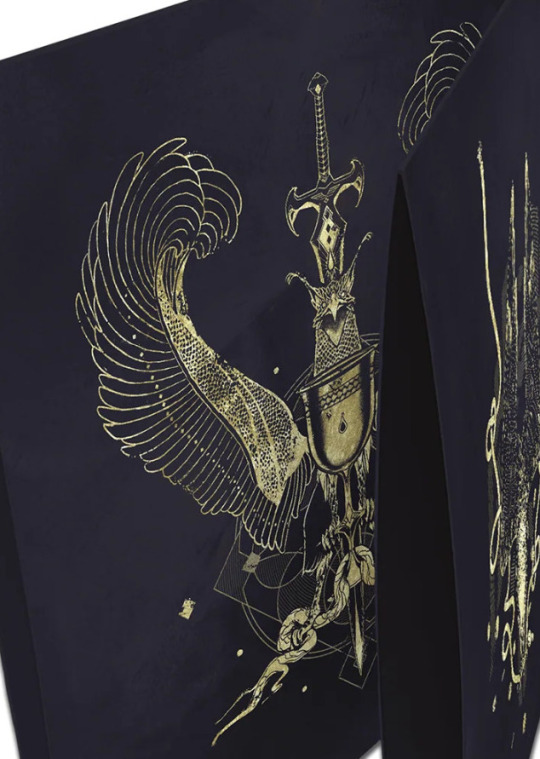
This seems to represent a griffon. It’s an uncommon Grey Warden’s symbol, since I didn’t see it anywhere before. However, the presence of the chalice with a symbol of a drop of “black” blood makes it unmistakable.
The sword that pierces the griffon’s neck also has a drop of blood, but it seems to be a white drop. Maybe this is related to the concept we learnt in the book Last Flight: as a last resource during the Fourth Blight, the Grey Warden started to force their griffons to a process similar to the Joining, but they didn’t handle the corruption well. Madness spread among the Griffons and most of them had to be sacrificed. This was the reason why the griffons went extinct.
The dagger that the griffon carries in its talons seems to pierce or be surrounded by something long and white that looks like tendrils or a snake with small branches, or a vine [which usually represents The Blight]. It’s not clear.

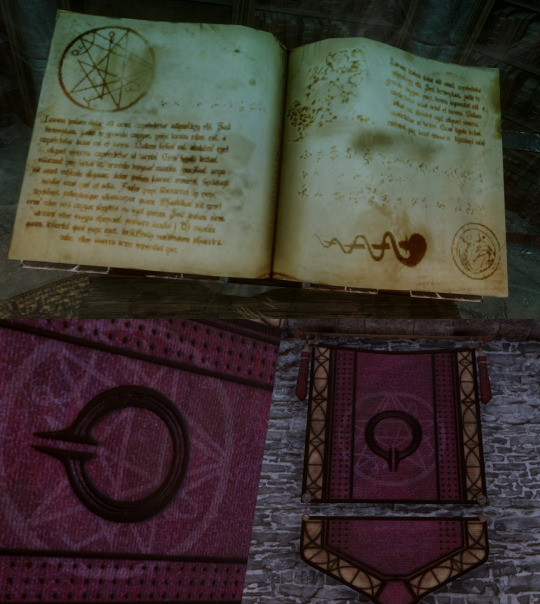
On the background, there is a symbol that looks similar to the ones we saw for glyphs or for mage organizations such as the Circle. So far, I could not find the one matching this.
I think it’s clear that this vinyl will contain the music related to the game DAO due to its strong relationship with the Gray Warden symbols.
Second Image: The Hawk and Kirkwall logo
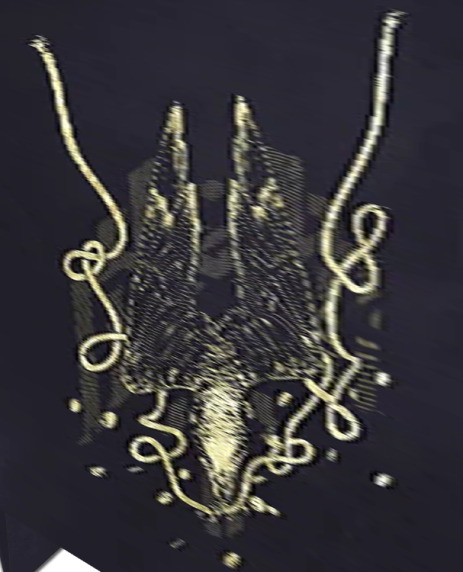
Twitter user Kiranox (@/veranox) was able to do some photo manipulation and have a better image of the second and third one despite the perspective.
As @felassan has pointed out, this symbol displays two unmistakable old ones:

The Hawke falling onto its prey, and the Symbol of Kirkwall on the background.
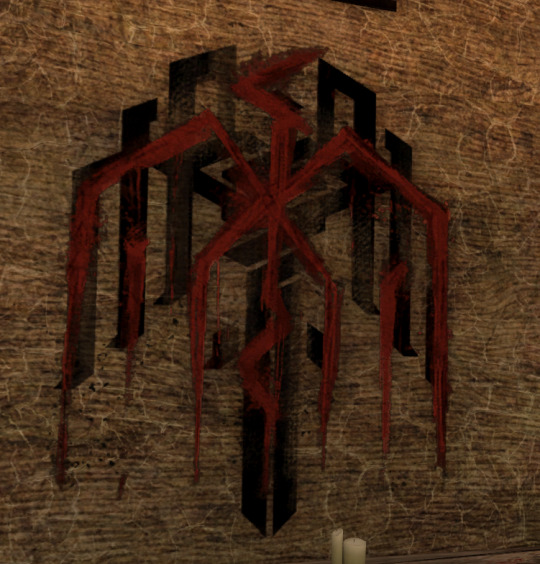
It’s curious that, in this vinyl illustration, both images are overlaped, as if they were trying to tell us that this geometrical symbol is a Hawk, when we know that, historically speaking, it was a rising dragon, from the time Kirkwall was called Emerius [more details in the post Kirkwall history and design].
When we have this image in high quality we will see it better, but the white figure also looks to me like a hawk falling free, and I can’t stop thinking in relating this to Flemeth’s words: "A word of advice, we stand upon the precipice of change. The world fears the inevitable plummet into the abyss. Watch for that moment… and when it comes, do not hesitate to leap.” Her cryptic words were always interpreted by me that the world needs Hawke to stay in the Fade. Soon, Fade and Waking World will join again, and maybe what Hawke did in the Fade until their death will be extremelly useful and key in the world that we are going to face in DA4.
This symbol also has what looks like a rope in a messy way, maybe even falling free too, with a knot in one side. The only symbol similar to this that I can relate to is Sylaise’s vallaslin, which looks like snakes or ropes in messy ways, but I don’t think there is any link between these. Is this image telling us that this is Hawke leaping into the abyss with a cut rope, and therefore, no way to return?
What I think it’s clear is that the vinyl placed in here will be related to DA2′s music due to its strong relationship with the hawk and Kirkwall symbology.
Third Image: The diagram and the hexagonal shape

If we continue this logic, this image should be a symbol representative of DAI.
What I see repeated several times here is a pattern of 6 circles, 3 of different colour and alternated. Inside of the central circle we have another set of three filled circles. This repetition of 3-circles is not something I can say I’ve seen in DAI. In fact, I’m nor really sure to what associate it with. If these were a Quincunx, we would have a lot of speculation to make since it’s a symbol present in Thedas since DAO.
These six circles are inside an hexagonal shape, which is deeply related to Tevinter, as I described in details in Patterns and Styles: Tevinter. It has a potential to be related to focis, that potentiated the power of the dreamers or priests to communicate with their dragon gods.
This design also looks similar to the diagrams that faintly appear in the background or on the body of some creatures that I talked about in Nation Art: Elvhen. However, none of them fits perfectly.
It is likely that this vinyl will countain all the music related to DAI due to the symboly of magical diagram and the presence of the Tevinter hexagonal shape.
Fourth Image: The diagram and the spheres
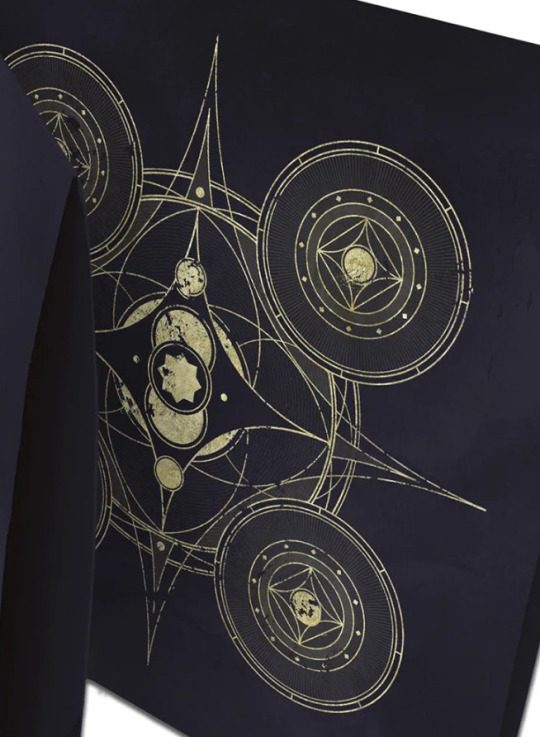
This is probably a mixture of all previous games with some pieces related to the incoming game of DA4.
This figure, in general, shows a Quincunx, where the central part are the three overlaped circles with a sun or a star inside.
I don’t think it can be related too much to Solas’ tarot Card [which is related to Orlesian decoration of the Winter Palace, as we can see a rug with the same kind of Quincunx symbology on it in the book of Art of Inquisition [below].

Again, as I said in Patterns and Styles: Orlais, a lot of Orlesian design and art seems to be strongly influenced by the elvhenan, so maybe this symbol has a particular meaning to the Elvhenan, but so far, I can’t think much of it beyond the fact that it is a Quincunx.

If Anything, that tarot card is showing the Quincunx symbol in itself, with Solas being the central, and therefore, the important thing. Just because these symbols have a clear Quincunx in them, one could relate the three spheres and the star in the vinyl illustration to Solas. These three spheres look like overlaping one that has a “sun”, so the meaning of an eclipse seems to be implied. And we know that Solas, in his Fen’Harel representation, is related to an ominous Eclipse, according the The Emergent Compendium I spoke about in the section “The Eclipse”.

Let’s talk about these three spheres and the star present in the vinyl: The star has the same shape to the central star we see in Solas’ mural when he draws the Temple of Mythal in “The actions of the Inquisitor”. This strengthens the hypothesis that the dragon we see in these illustations may be related to Mythal in her dragon shape.

I’m not sure if this symbology of three spheres overlapping has something to do with the mysterious symbol found at Emerald Graves: Din'an Hanin. In it, we see three golden ring of the same size, aligned. The central one is surrounded by a bigger ring, which seems to be similar to the image we see in this black-and-golden illustration: Three spheres [blue and orange ones] with a bigger ring [yellow line]. In fact, it looks like a progression: The first stage is the one shown in Emerald Graves: Din'an Hanin, where the two orange sphere approach and try to overlap the blue one, which is inside a bigger ring. The second stage is the orange circles overlaping half of the blue one [this is seen in the trailer too], and the last one is this vinyl illustration, where we see that the three spheres are inside the bigger ring and we see the middle of the blue sphere: a sun or a star, or maybe a “sphere of fire”. I talked a lot about the concept of the “sphere of fire” in Murals in DAI: Red Lyrium Idol and The Death of a Titan. A lot of more speculation in Ancient Elven codices; Vir Dirthara, and how the “sphere of fire” also leaked into the Andrastian faith in Andrastian Design: Stained Glasses.
This Star [made of eight points] is the same one that we see in the mural of Temple of Mythal, but it’s also very similar to the yellow mosaic I talked about a lot in posts such as: “The Death of a Titan” and in the tag asterisk symbol. This links Mythal with this star, which can potentially be related to the heart of the titans and this mysterious power the Evanuris discovered aside Lyrium.
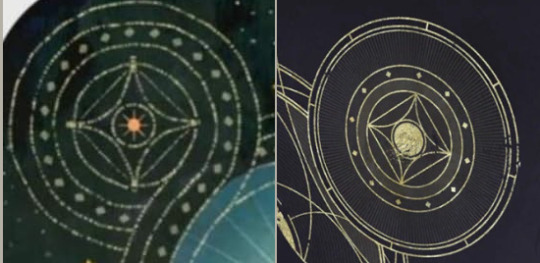
Why I don’t give to much thoughts to Solas’ tarot card? Because it’s a general Quincunx which central important element is Soals himself. Similar Quincunx symbol appears in this vinyl illustration. In fact the circles that compound this Quincunx are very similar, but those in Solas’ tarot card’s present a series of small icons: a moon, a sun, undulating lines, and four dots.
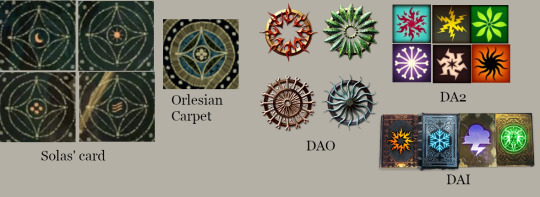
We can assume that they may be related to magic, but so far we saw in DAO, DA2, and DAI, all these symbols come from the Circle, and therefore most of them keep recreating the Chantry icon, or are inspired in it: all of them are very close to the design of the sunburst. The Orlesian carpet has a small flower in it, which is a very typical icon present in all orlesian design.
But Solas’ tarot card has four clear symbols:
We can agree that Sun/Moon may have some relationship with Mythal/Elgar’nan, since there is information that relates them, but sadly the only source we have for that is the Unreliable Dalish Tales, so it’s hard to be sure. These both symbols are also related to the Eclipse symbology that, at this point, we can’t deny as related to Fen’Harel.
The undulating lines have been associated with “shape and control” according to the info I gathered in “Murals in DAI: Basics” in the section “Undulating lines associated with Vallaslin or/and bound-slavery”.
The dots, so far I remember, were never seen in any game. I can only relate them to these four-petal flowers in the Orlesian design, but since we are talking about Elvhenan, it must have come from an older symbol. Maybe it’s something related to the Forgotten Ones or the Titans indeed, both groups quite unknown in the lore still. The other posibility to understand these four dots is to represent a Quincunx symbol without the middle dot.
#old gods#dragon#Quincunx#evanuris#mythal#tarot cards#eclipse#Golden Ring#fire sphere#sphere of fire#Bull horn head creature#forgotten ones#Dreamers#elvhenan#codex focused#High speculation
36 notes
·
View notes
Text

#antique books#old book#poetry#love#love letters#love language#readding books#photography#details#hands#hand model#golden ring#beauty#quotes#love quotes#golden jewelry#beige shirt#beige aesthetic#cinematic photography#my uplods
3 notes
·
View notes
Text




"I love when you stare at me, I'm just so fresh, so clean" So Fresh, So Clean - Outkast
—————————————/—————————————
sources: @dreamymoonlight444, @tannedfiji, @jazzdharris on pinterest
#aaliyah#brandy#early 2000s#late 90s#yellow moodboard#gold moodboard#street lights#golden ring#y2k style#moodboard#random#outkast#so fresh so clean#love this song#!!! <3
5 notes
·
View notes
Text
If I decide to deepen my voice; I could do something really cool.
Record all the female parts for duet songs before the voice change; and then record the male parts after. Then edit them together and put it to music.
#Ideally I’d do the music first#I have a song I wrote that I could do this with (husband and wife parts; with a kid at the end… I might get an actual kid to voice the kid)#Whether I decide to make hormonal alterations or not I would like to make an utau/vocaloid of my voice#so I can sing duets with a robot version of myself#But for songs not made by me… I’m thinking:#Anything you can do I can do better#The Tinker of Rye (if I end up being able to go that low ASDFGHDBDN)#Golden Ring#Sixteen going on Seventeen#The Tango Maureen#Cantarella#Pass the Kerosene (if I can go that high now)#Partners in Crime
2 notes
·
View notes